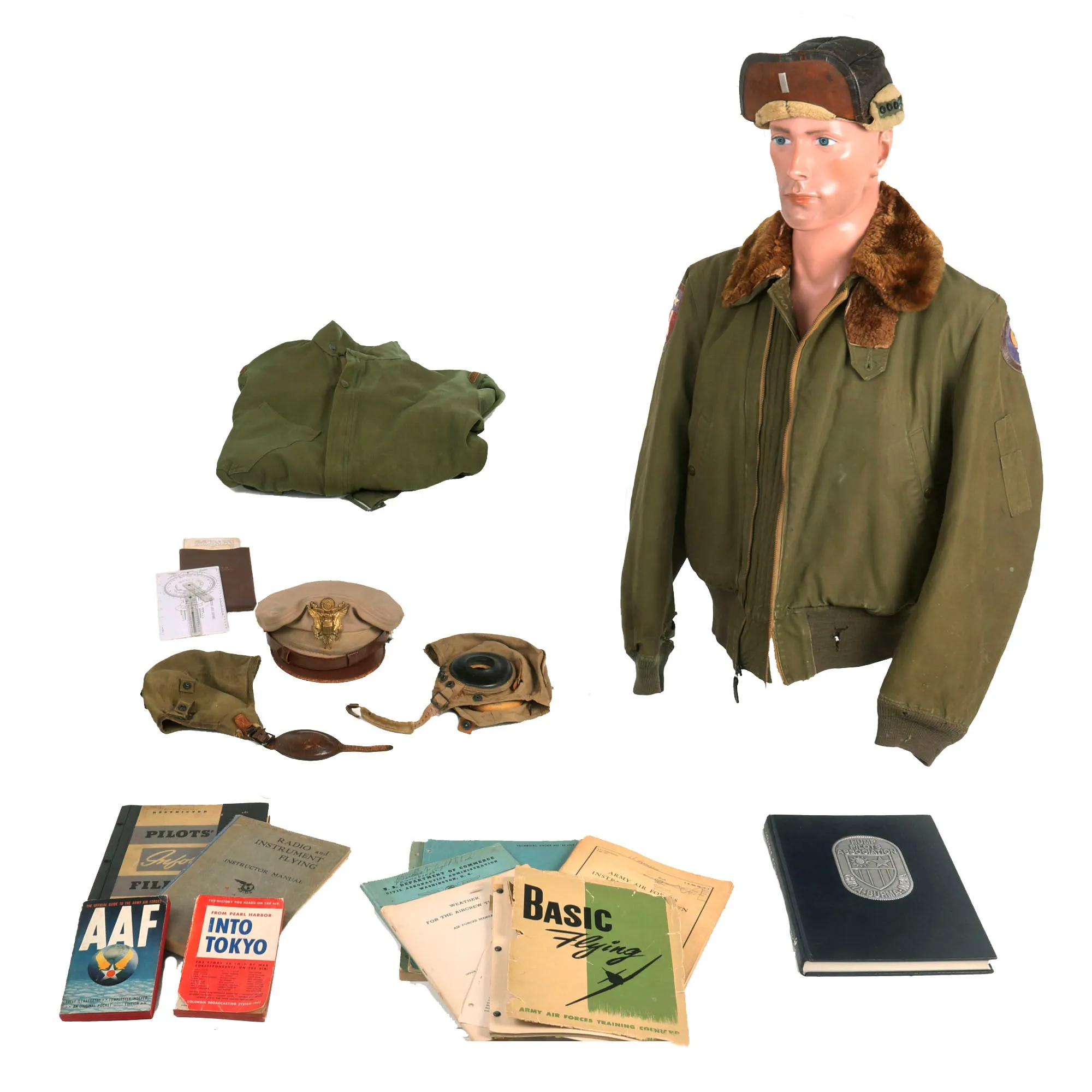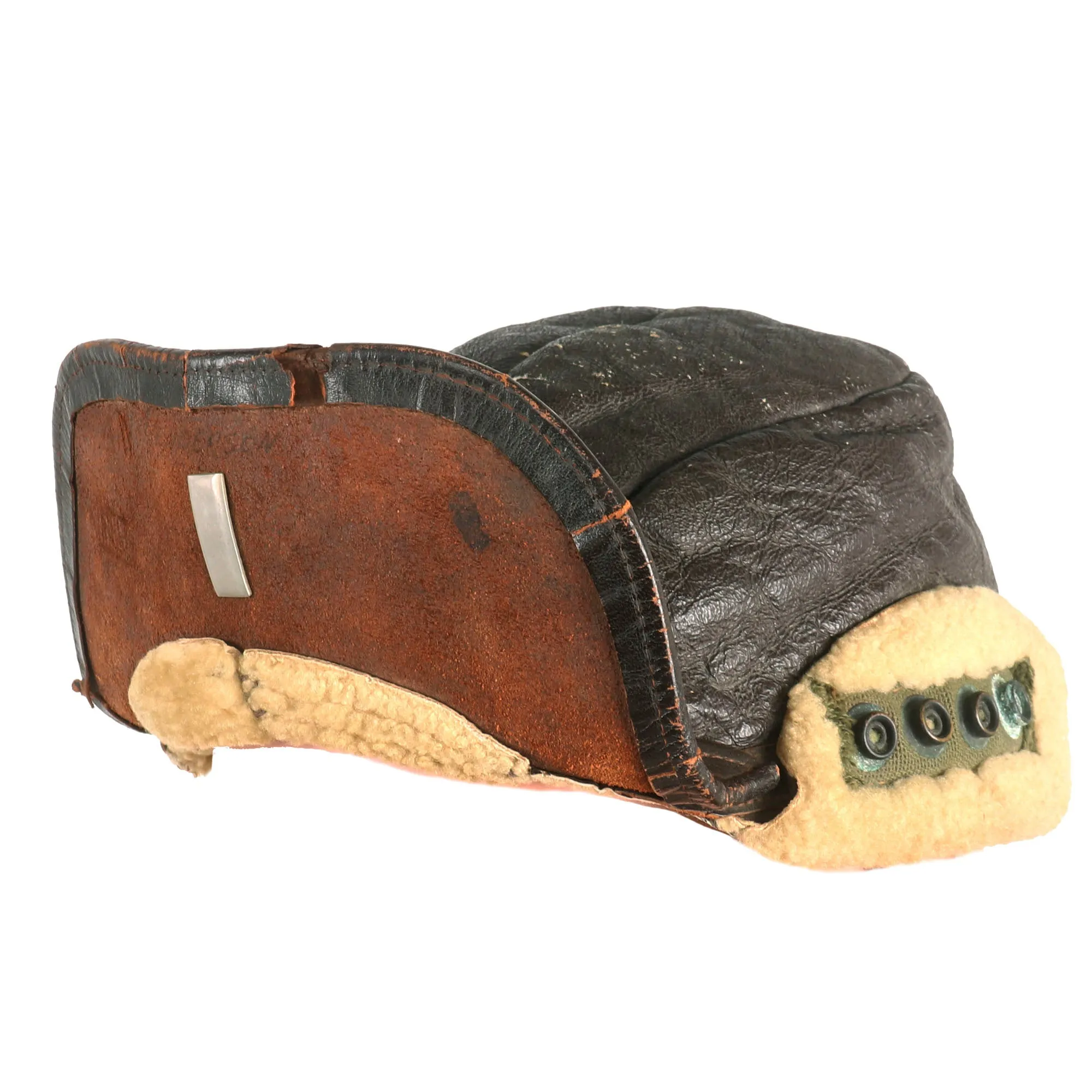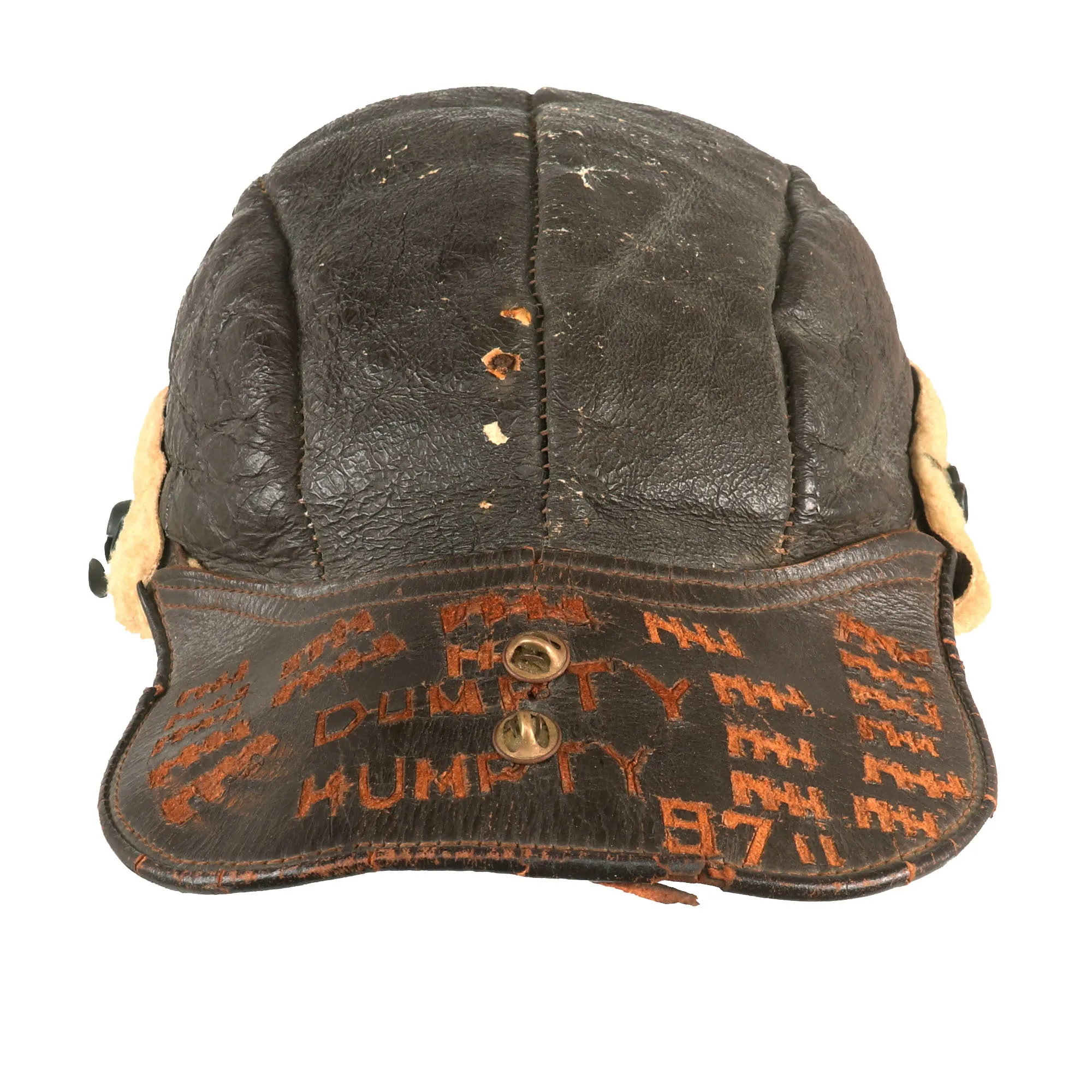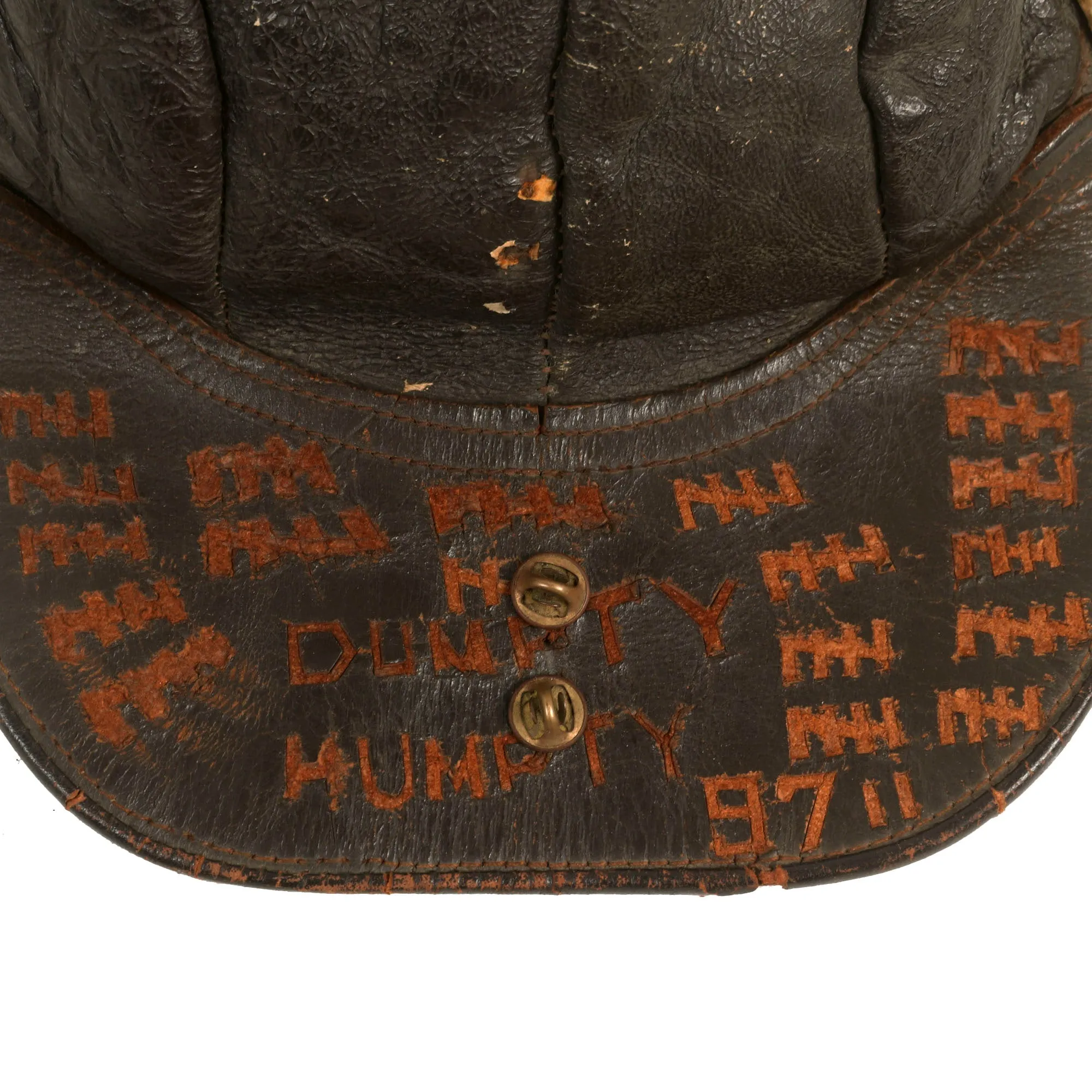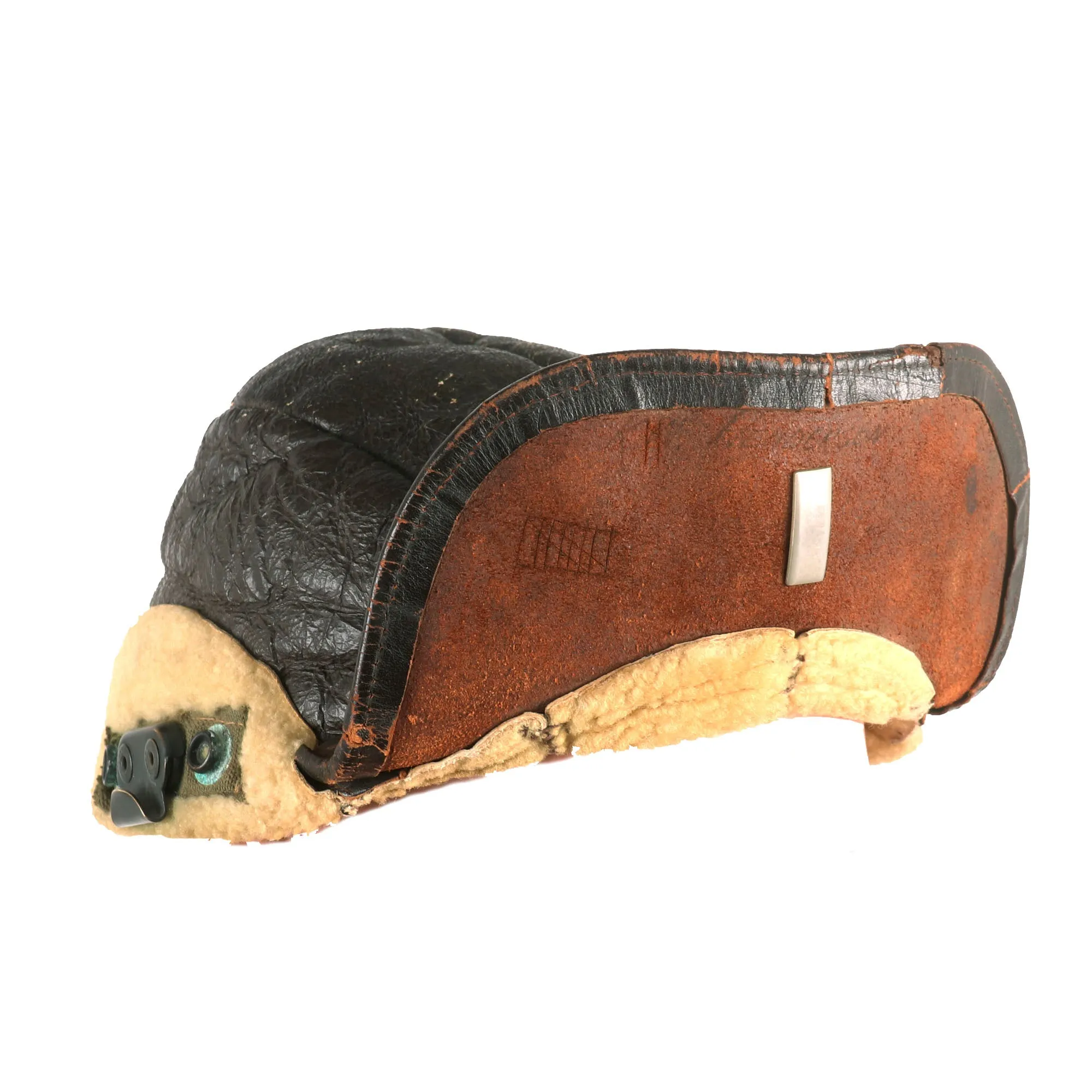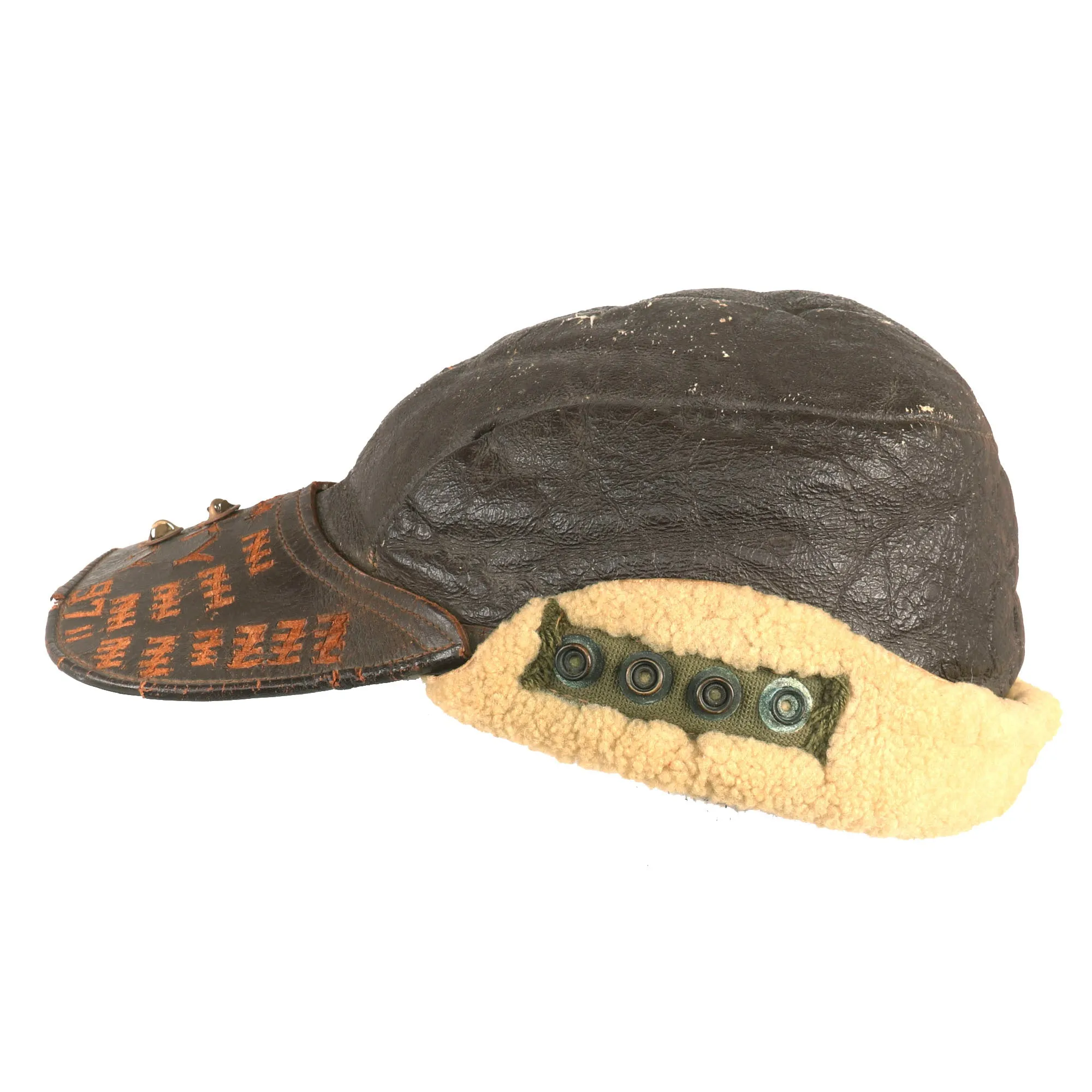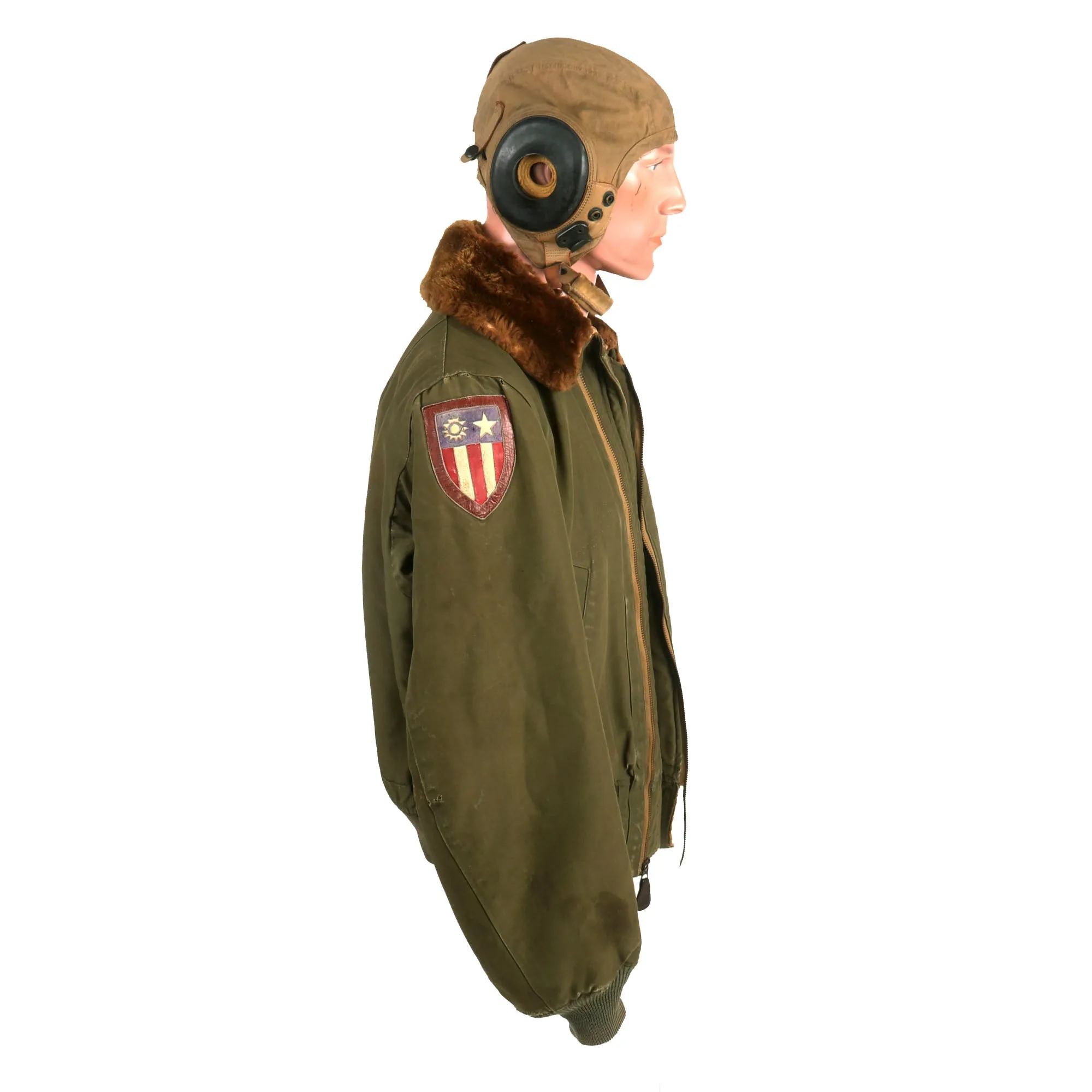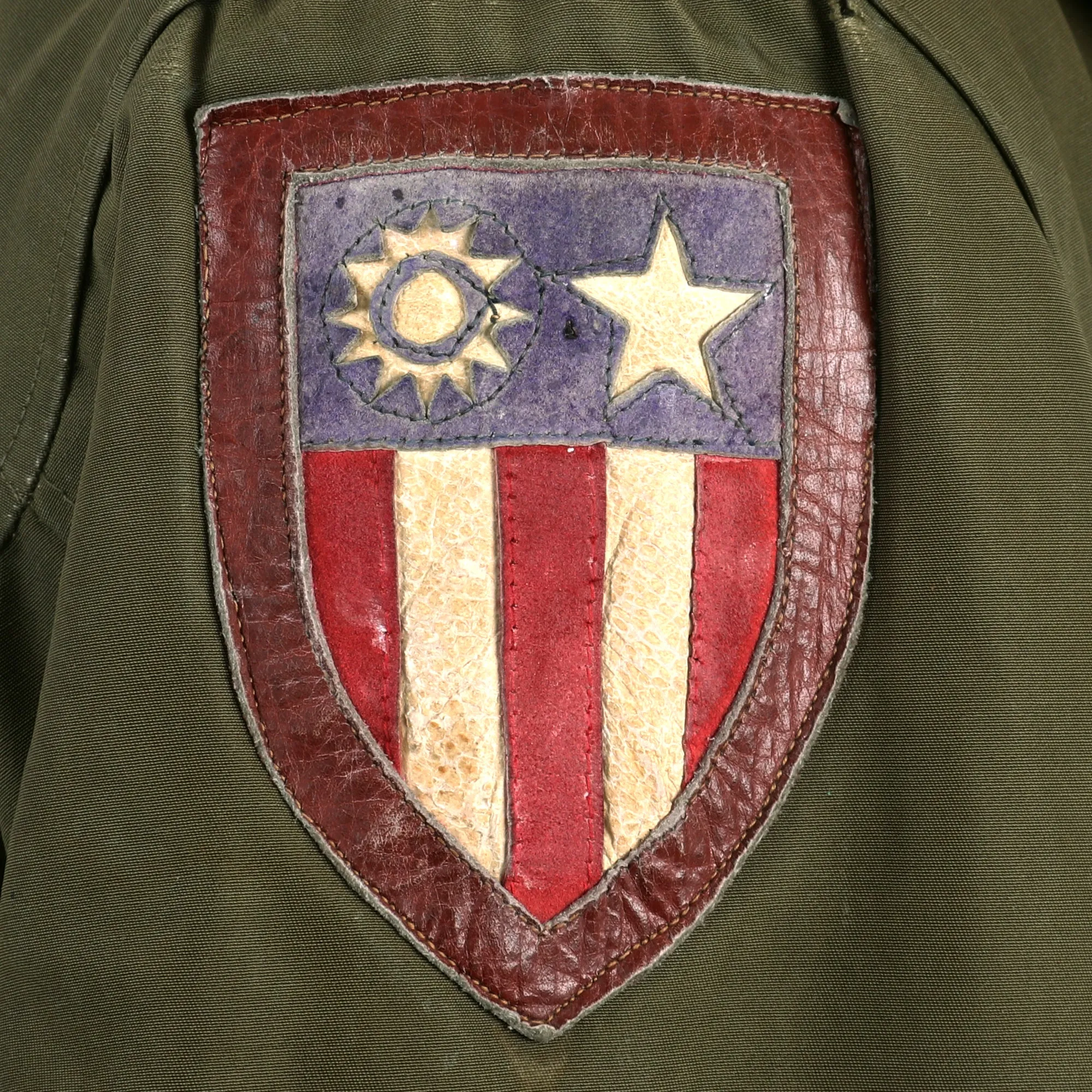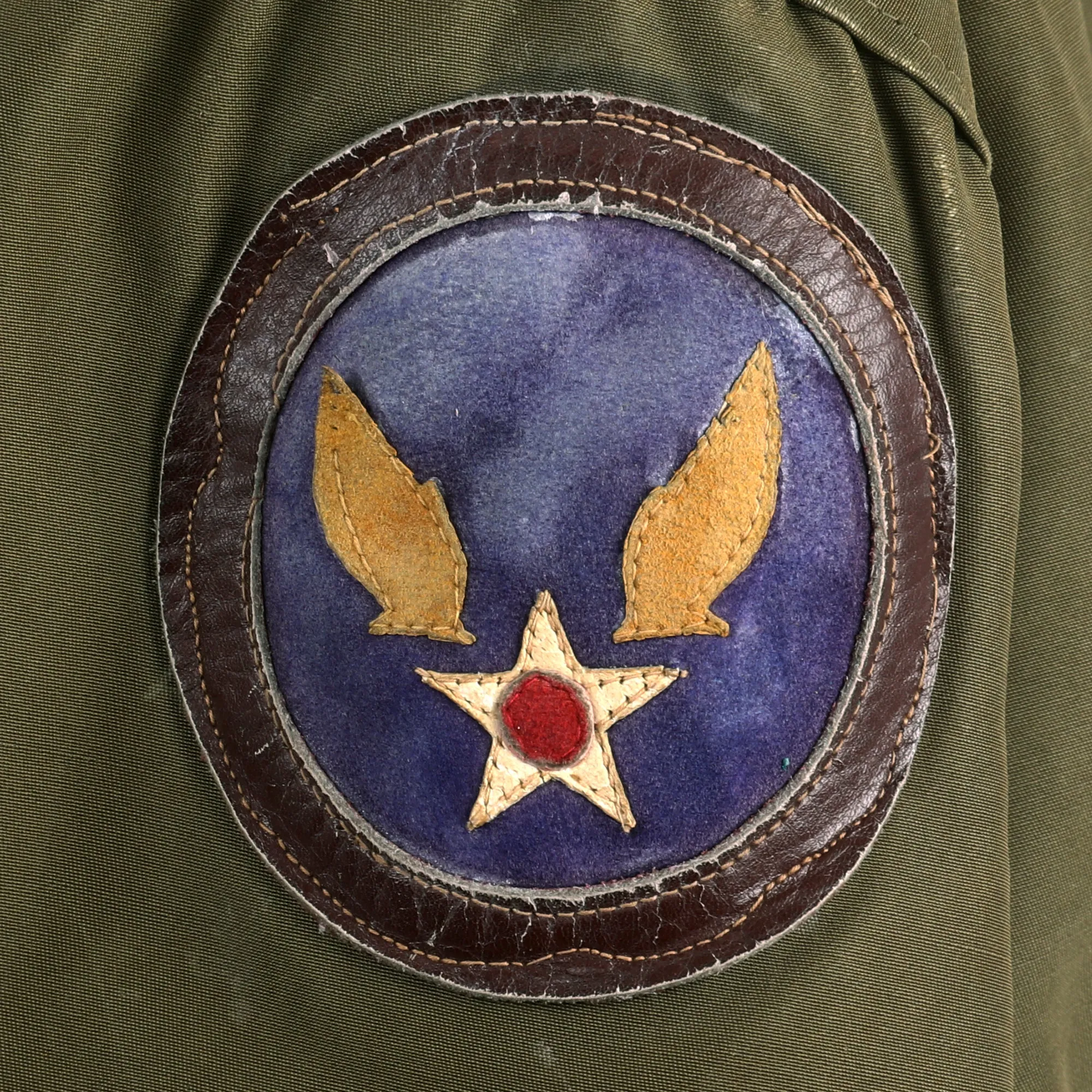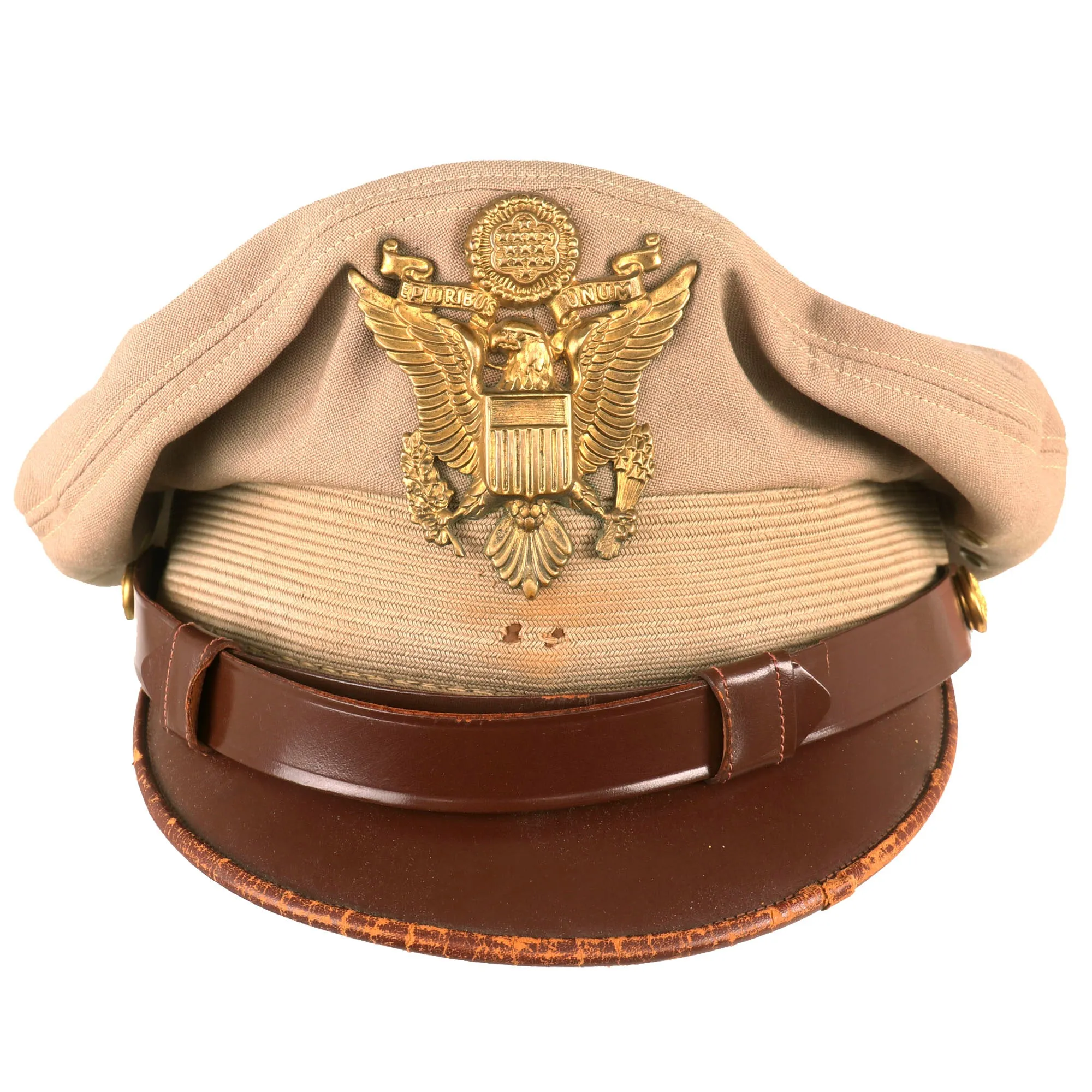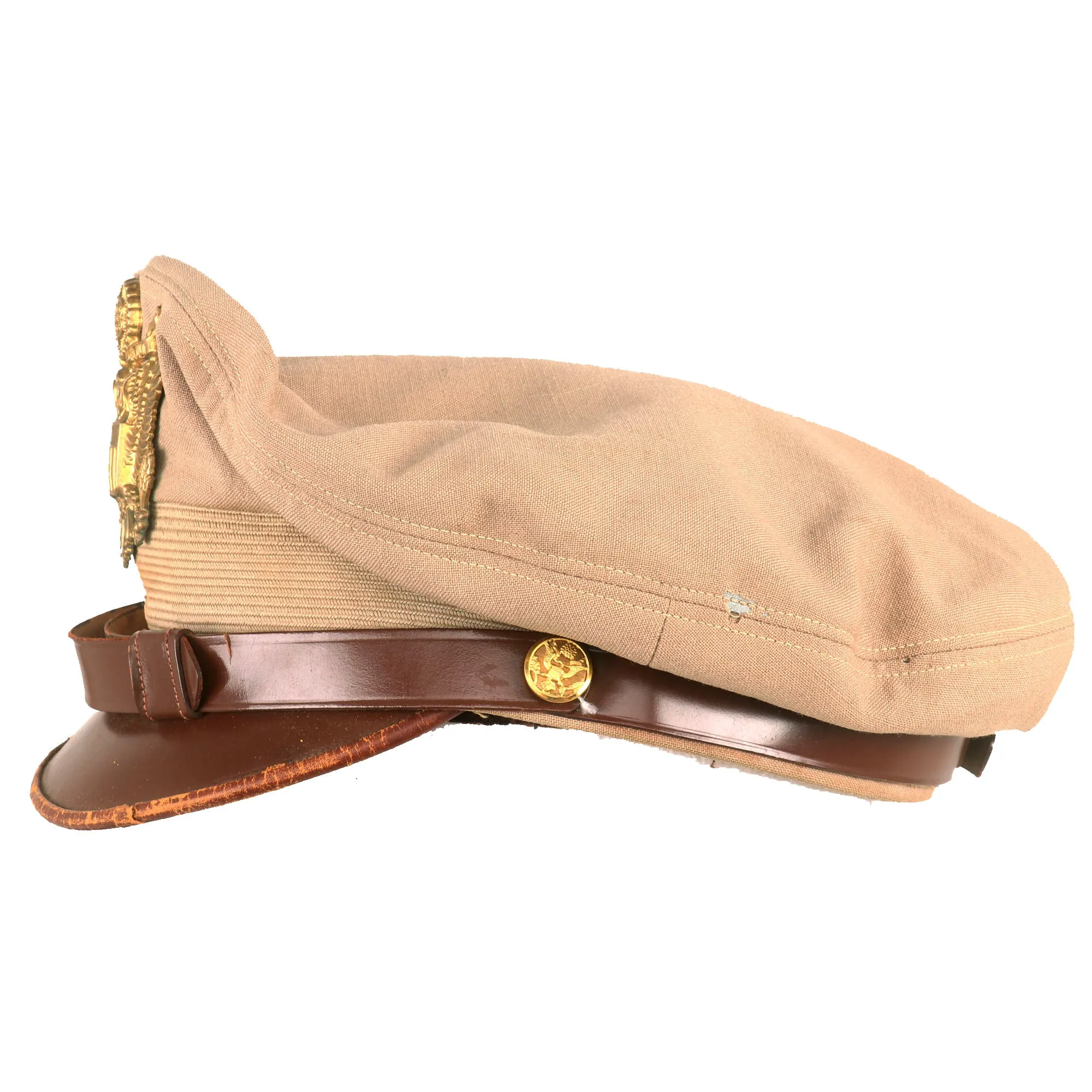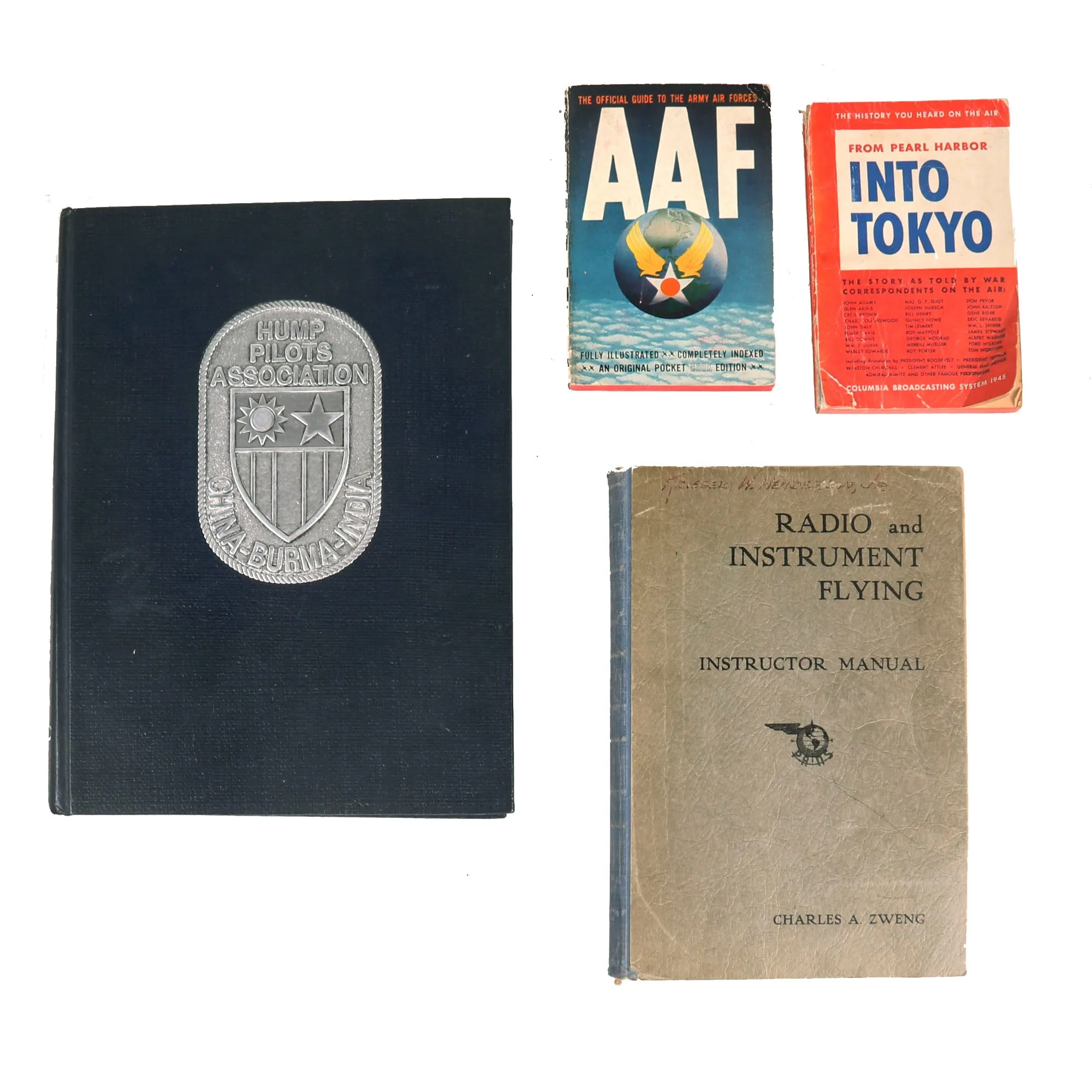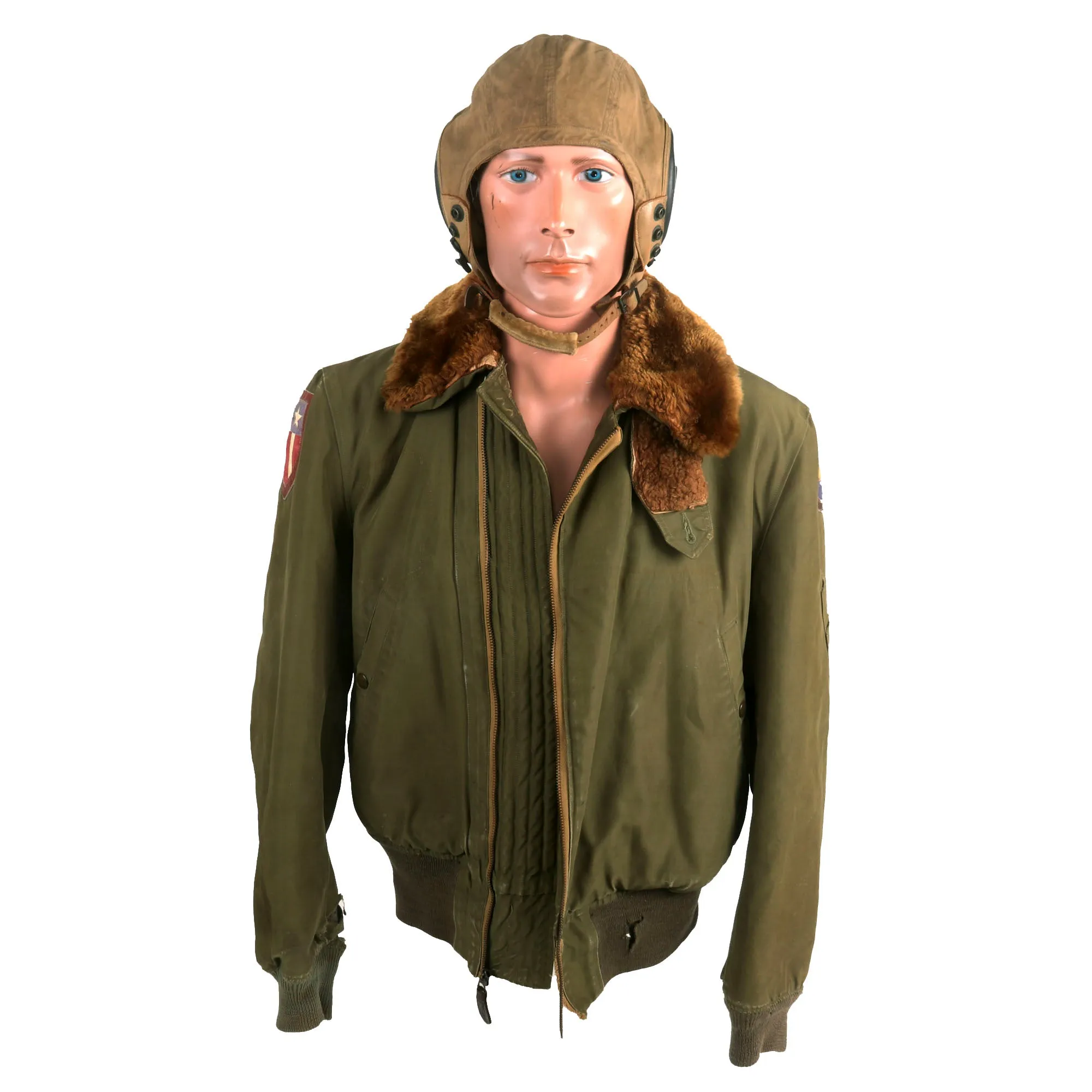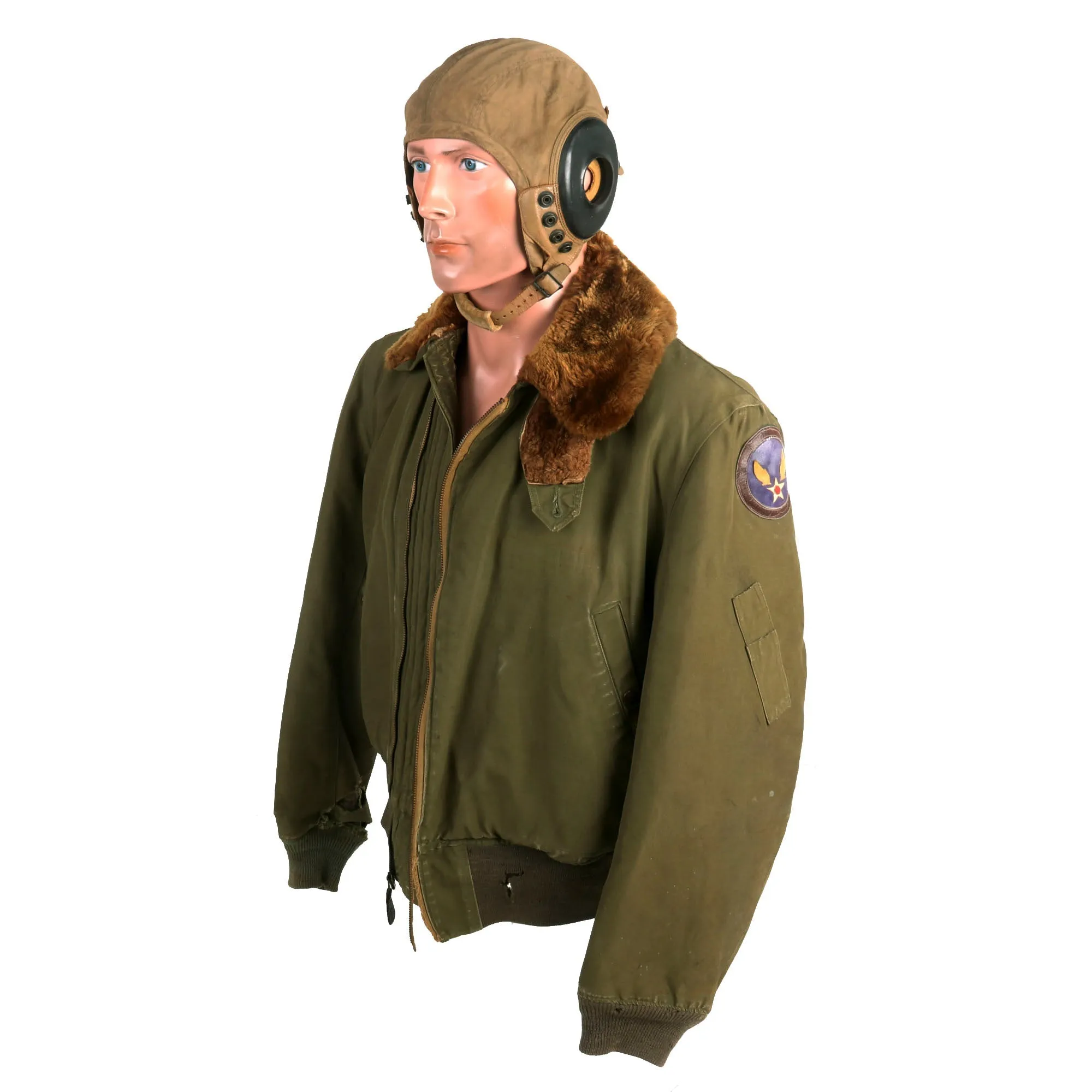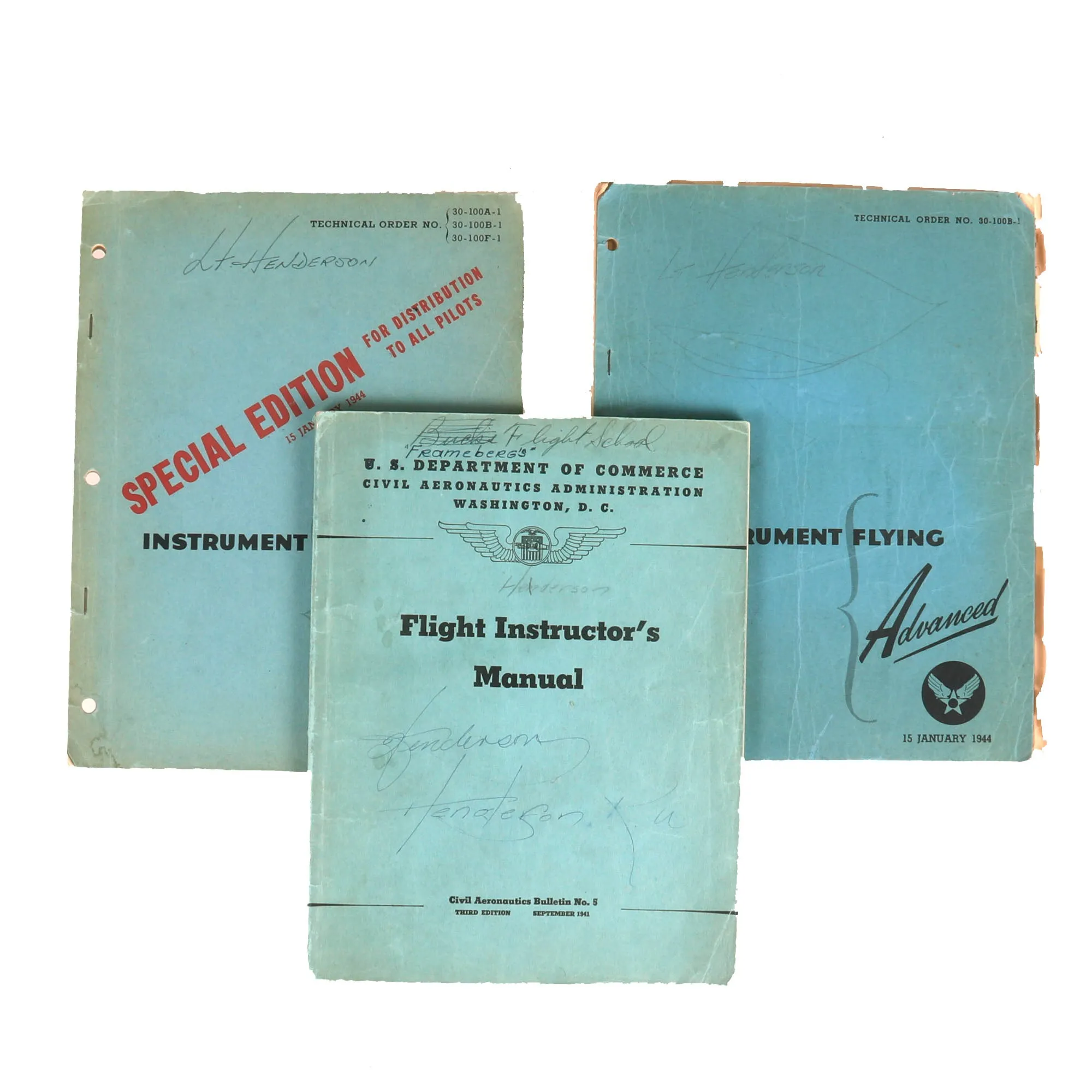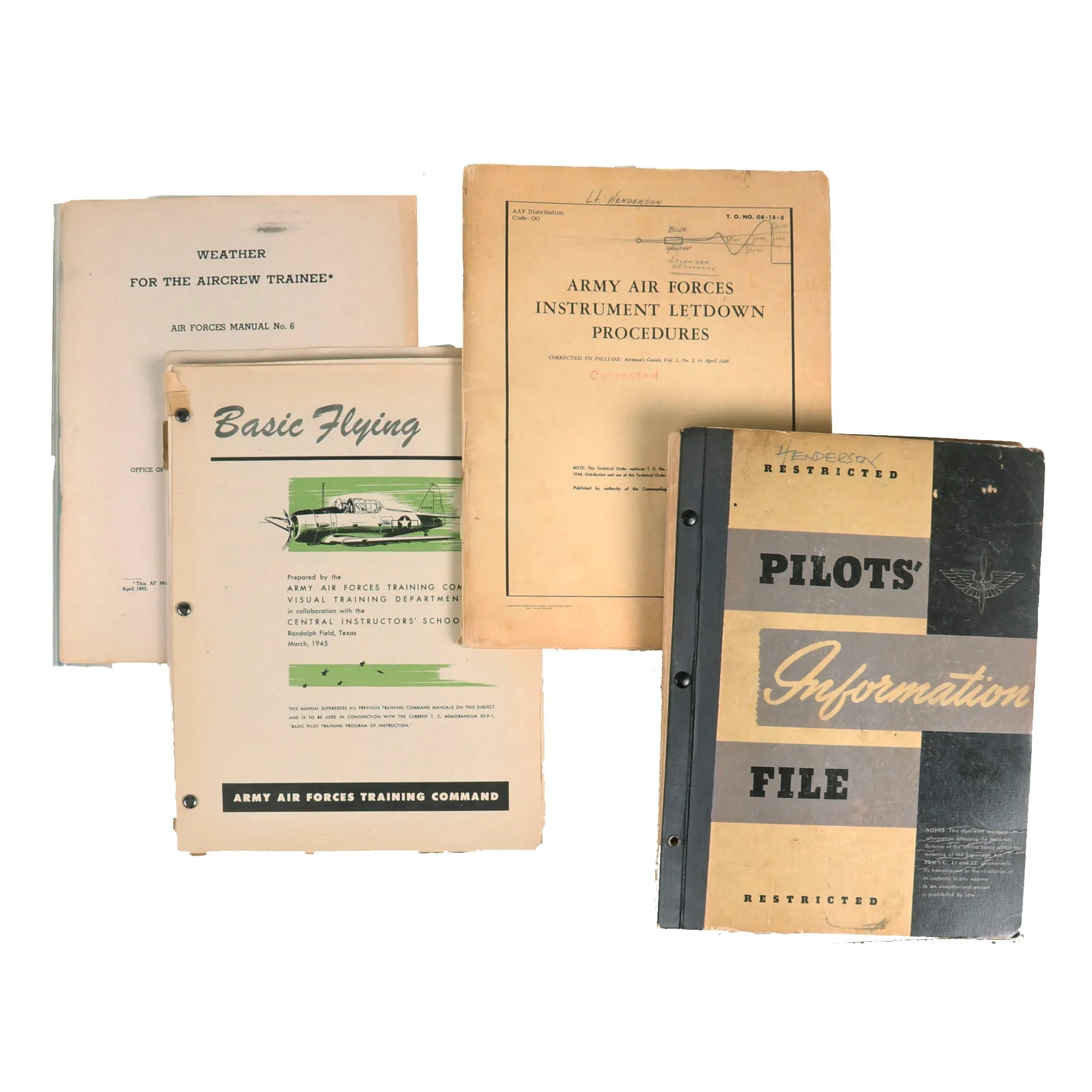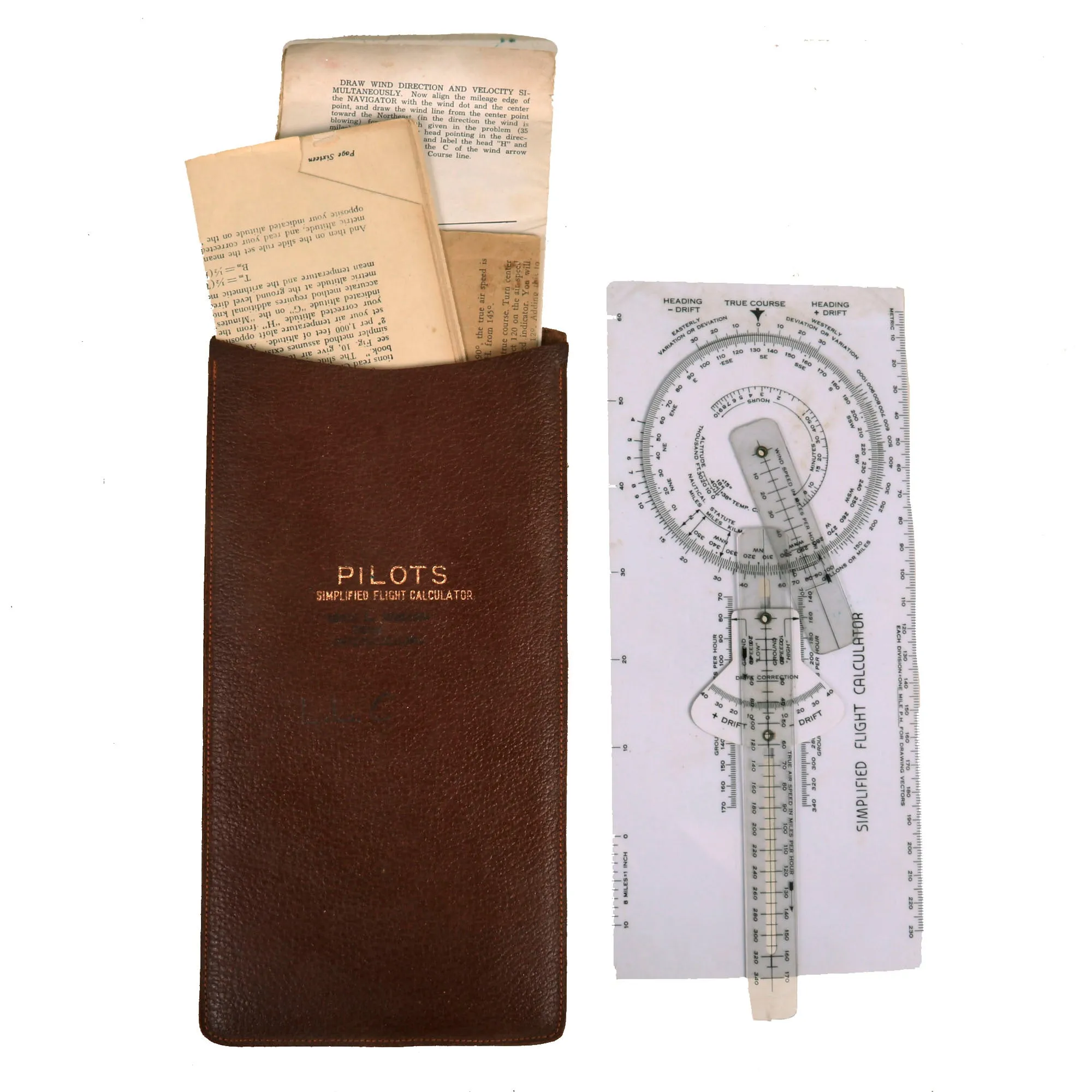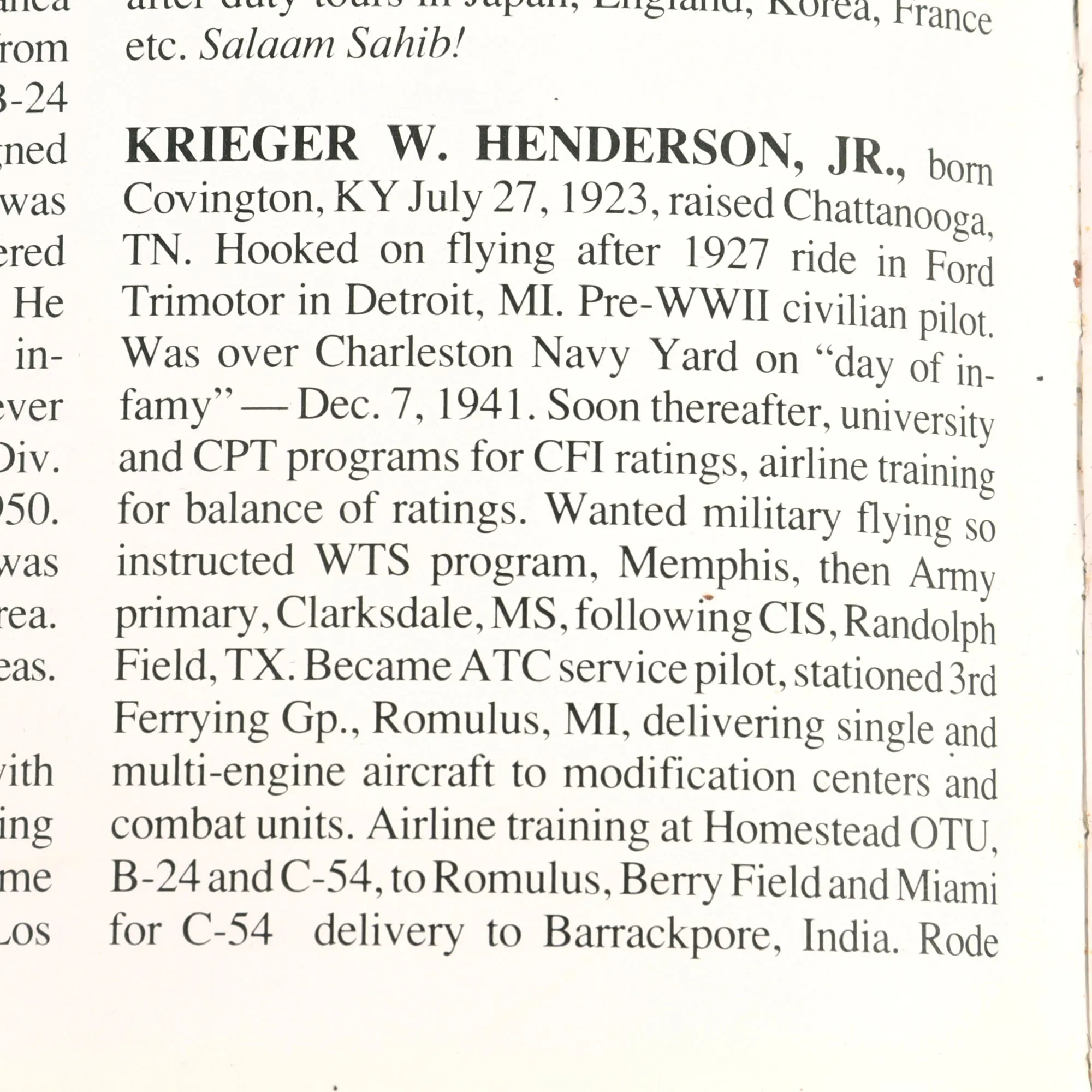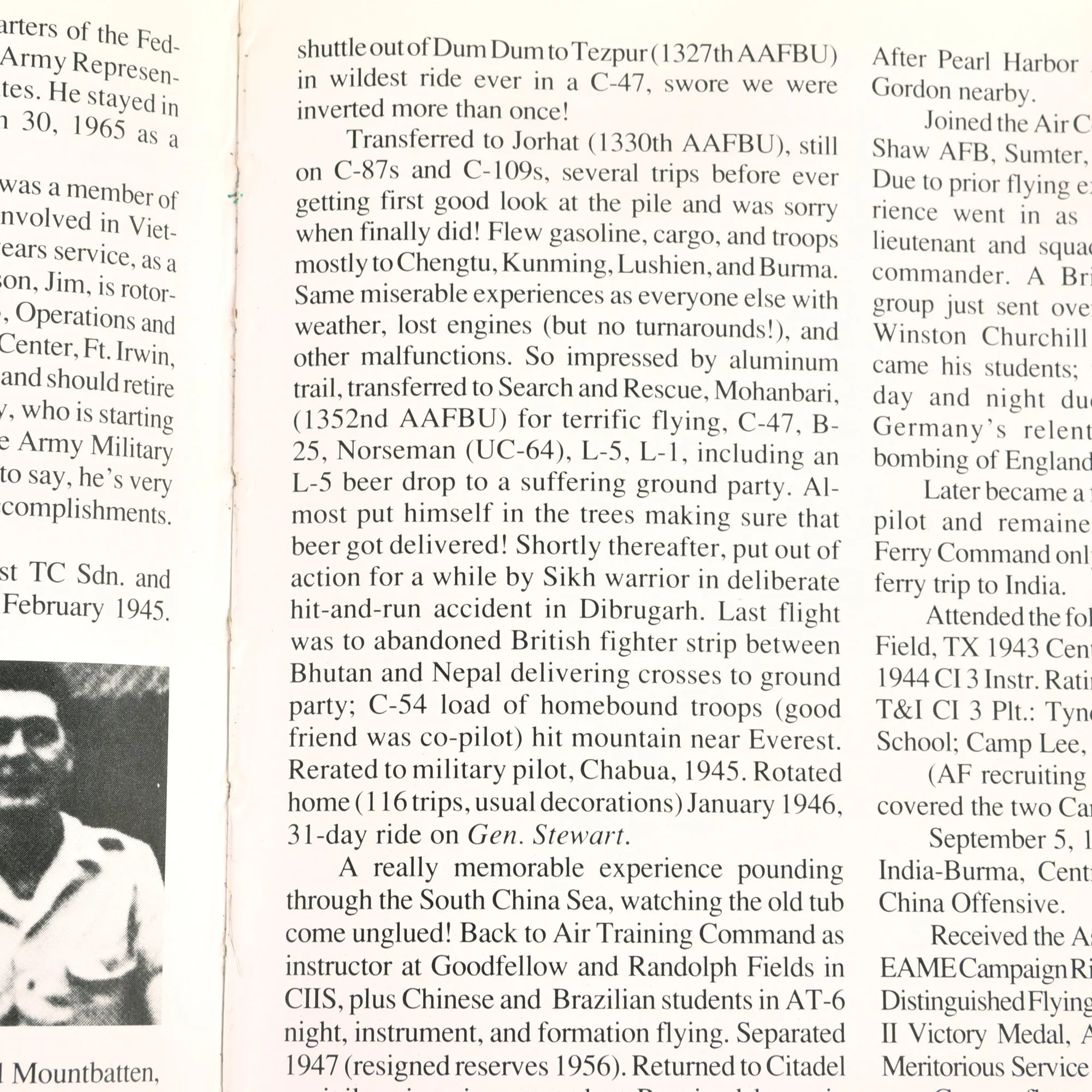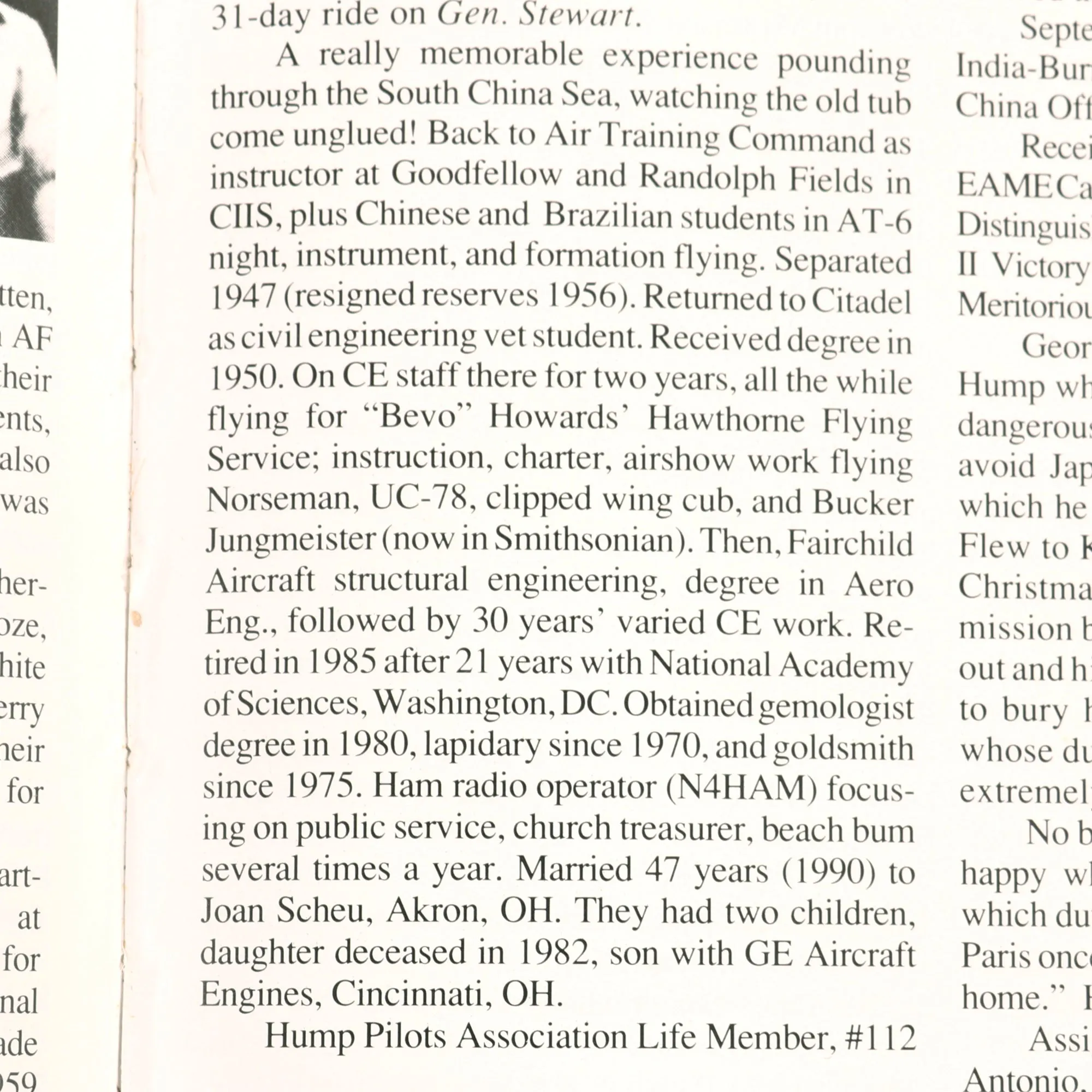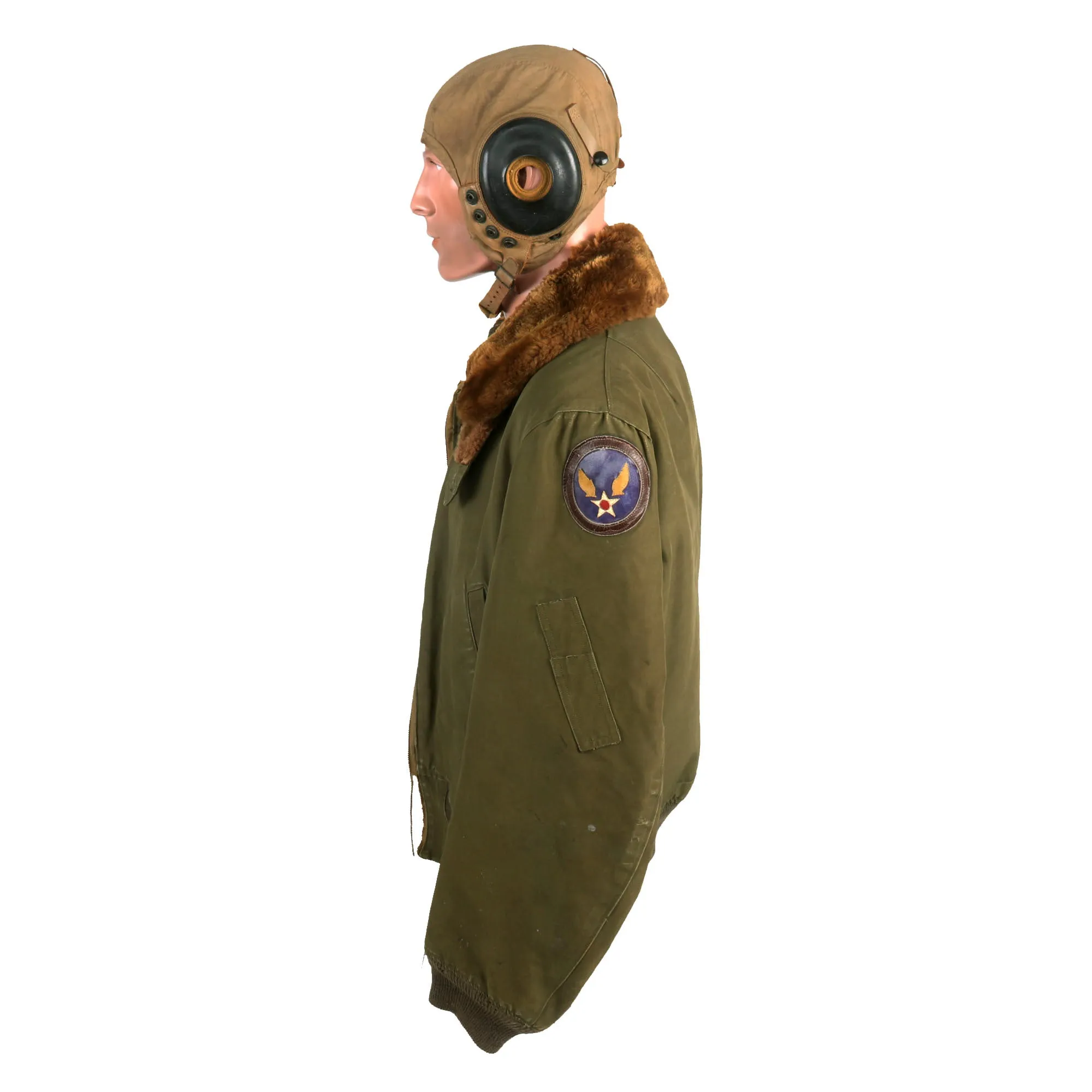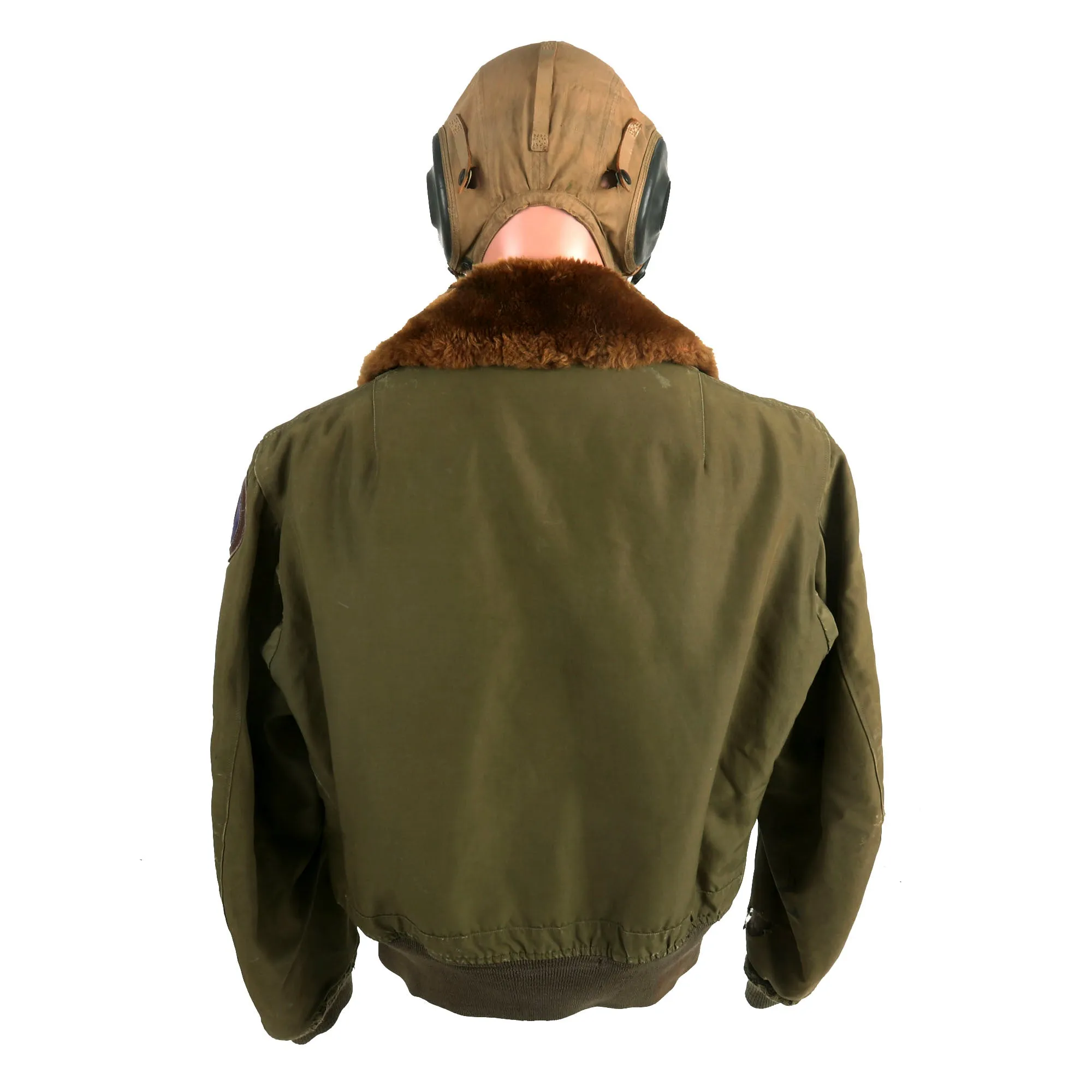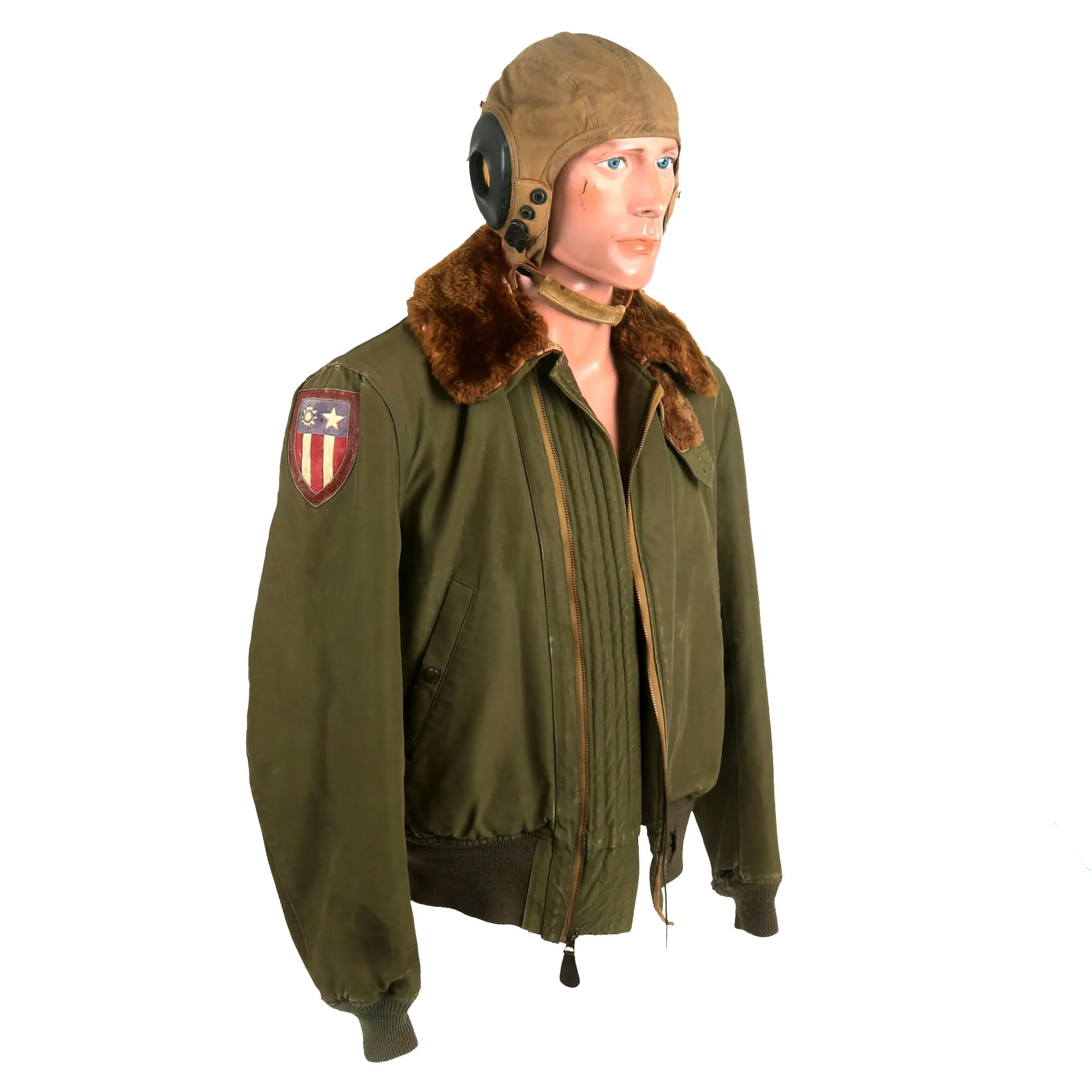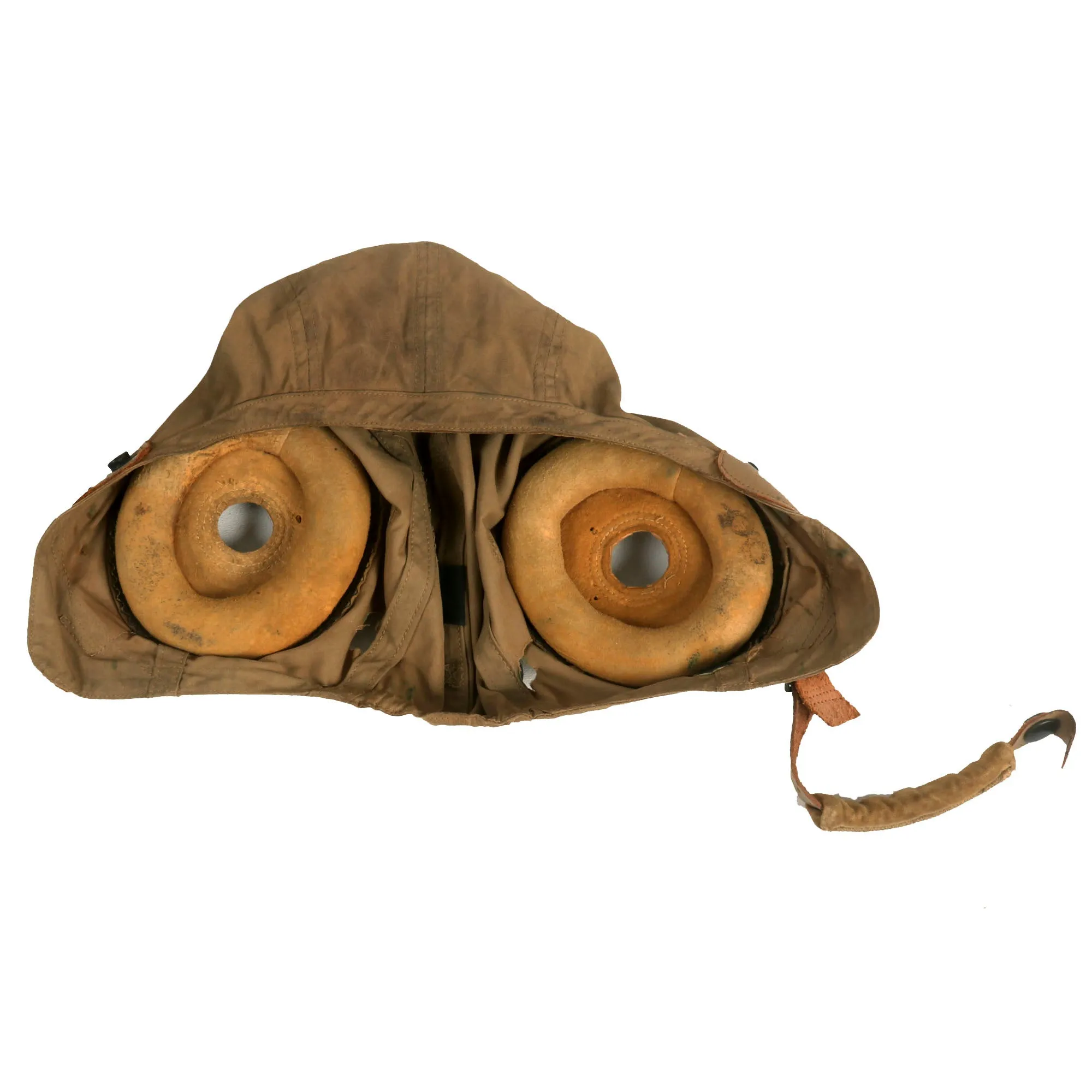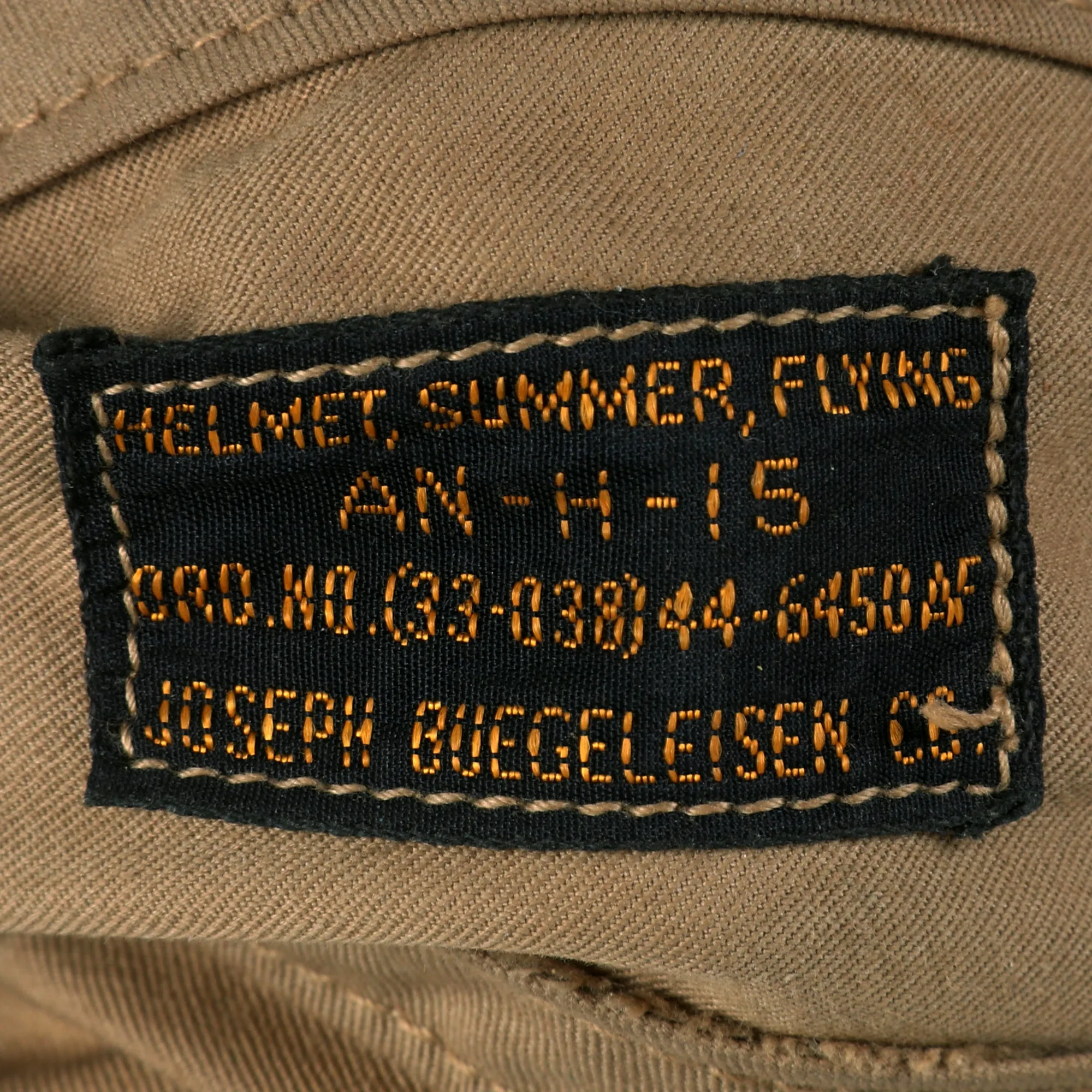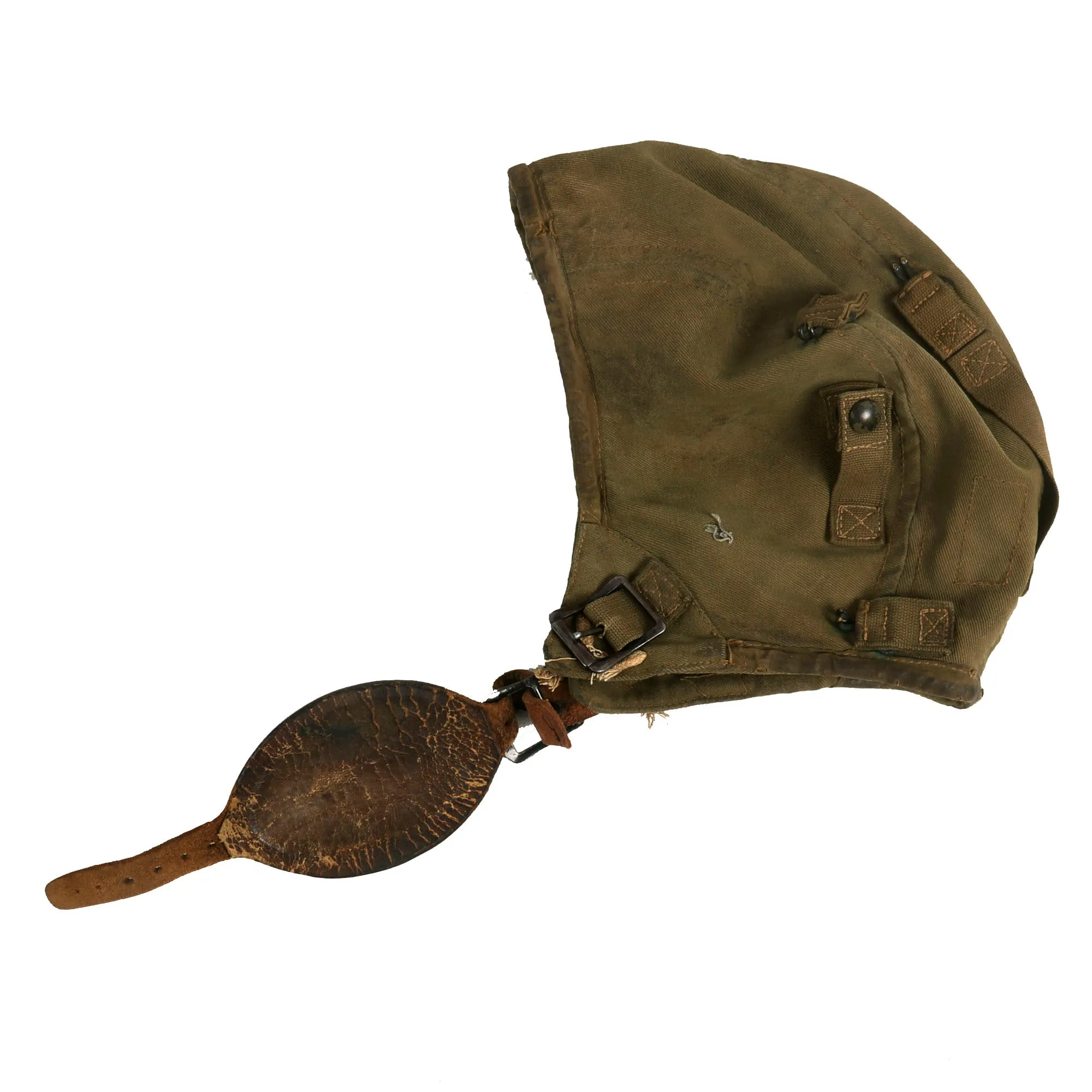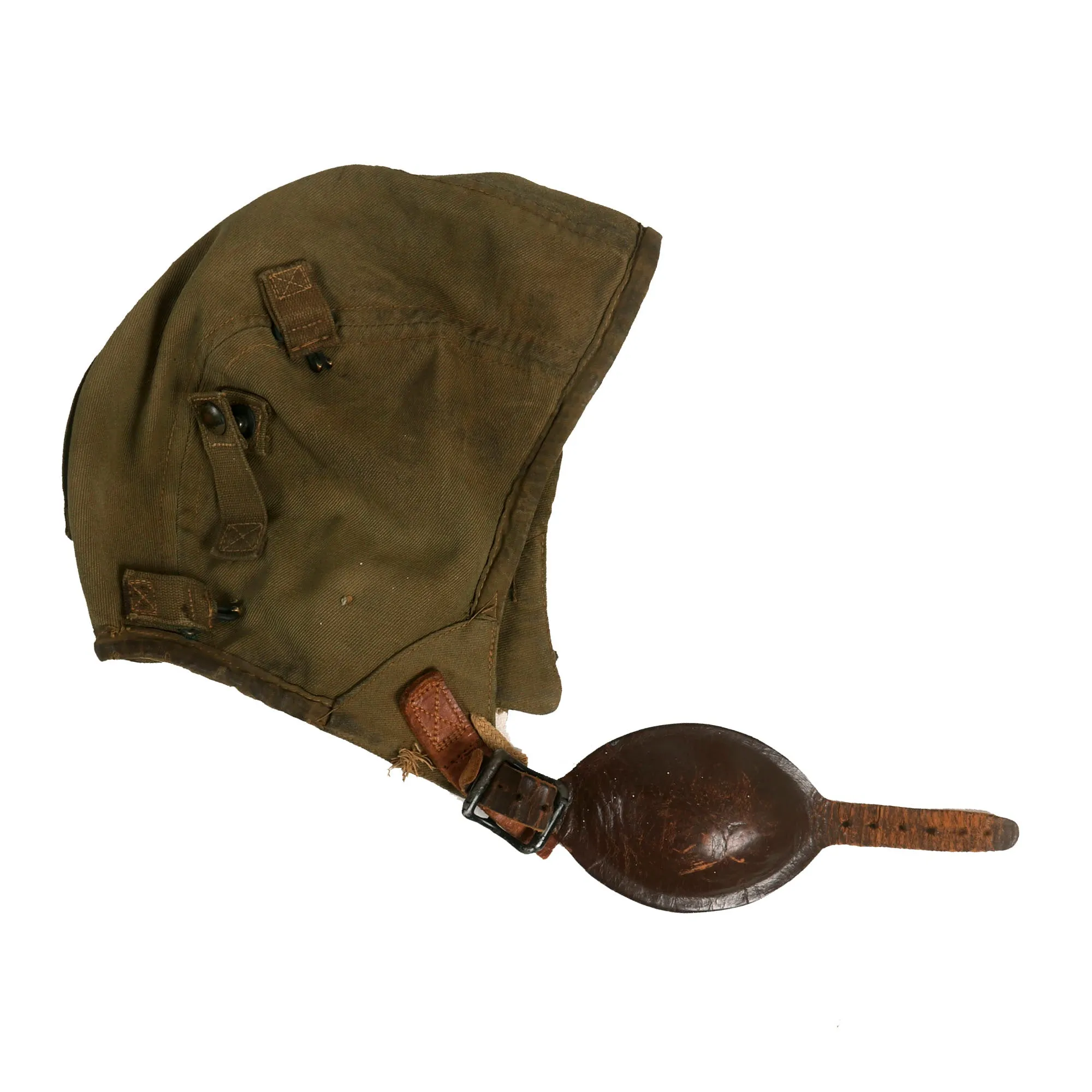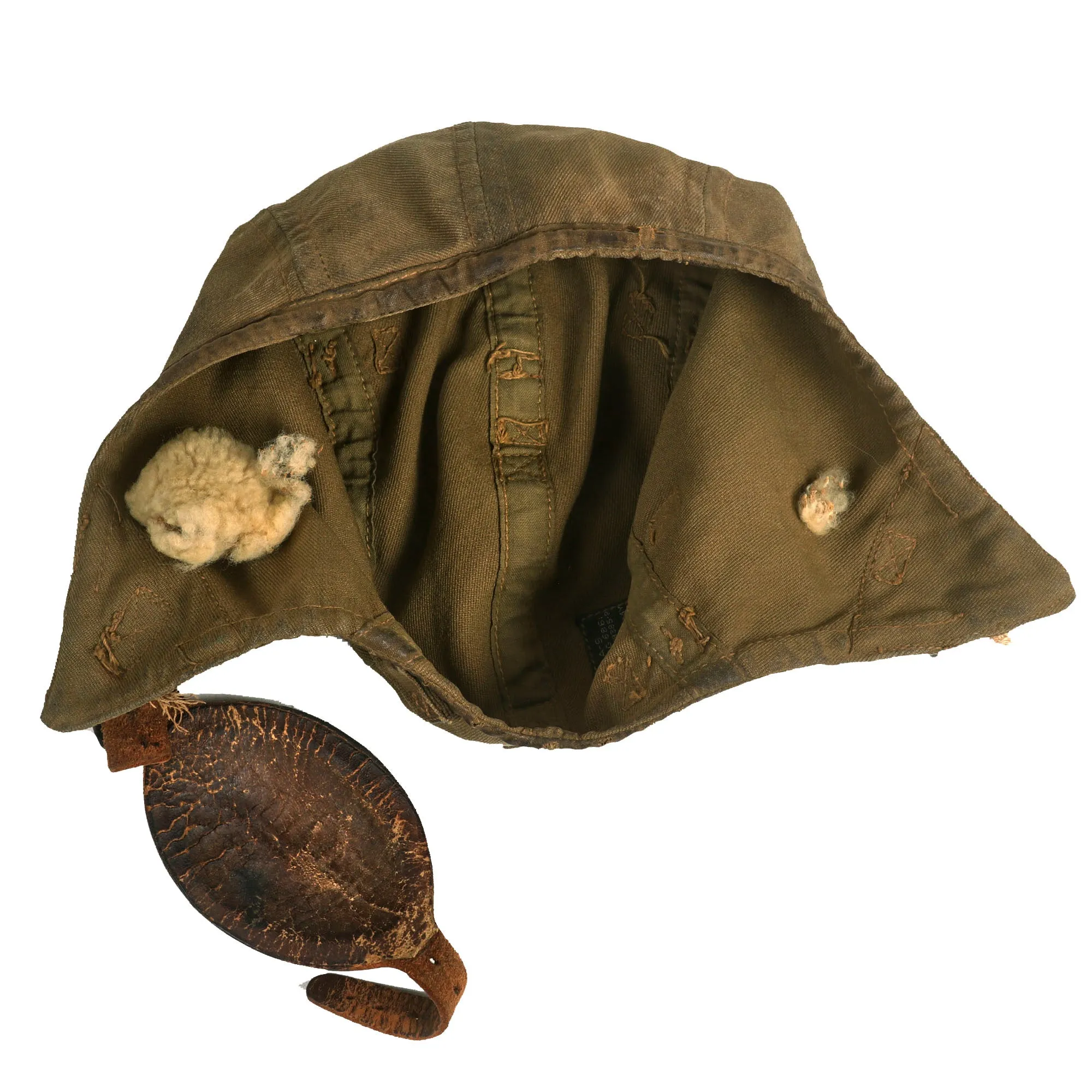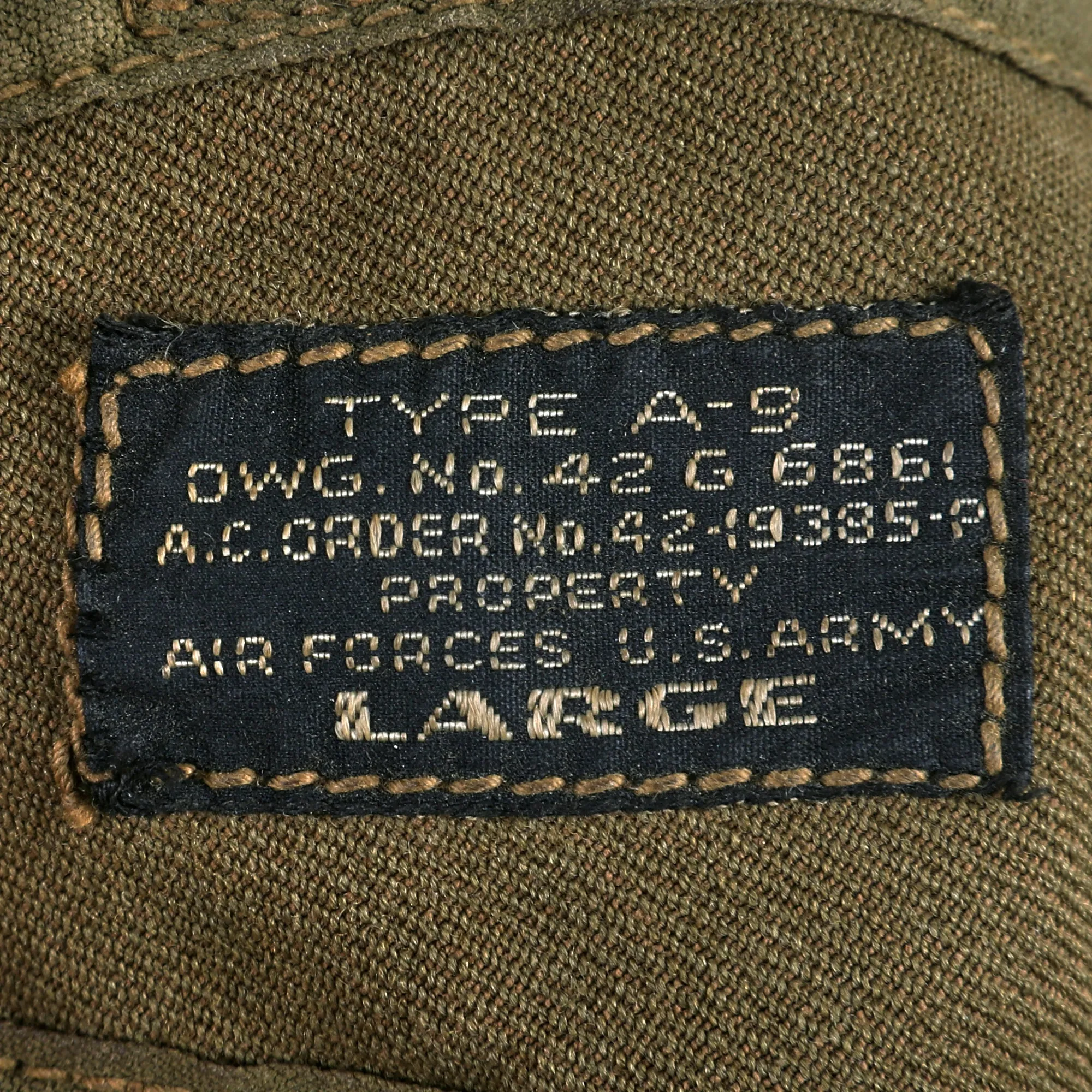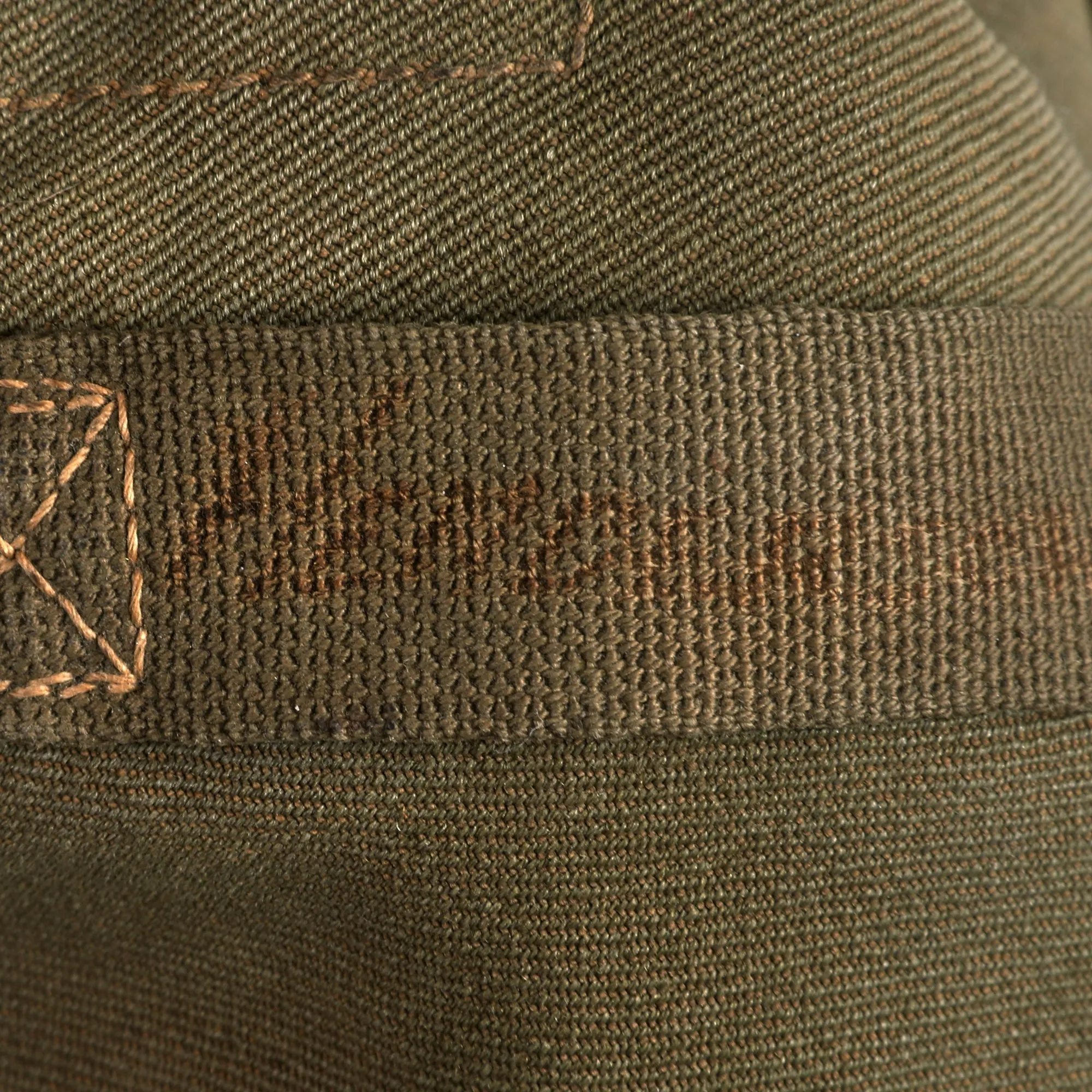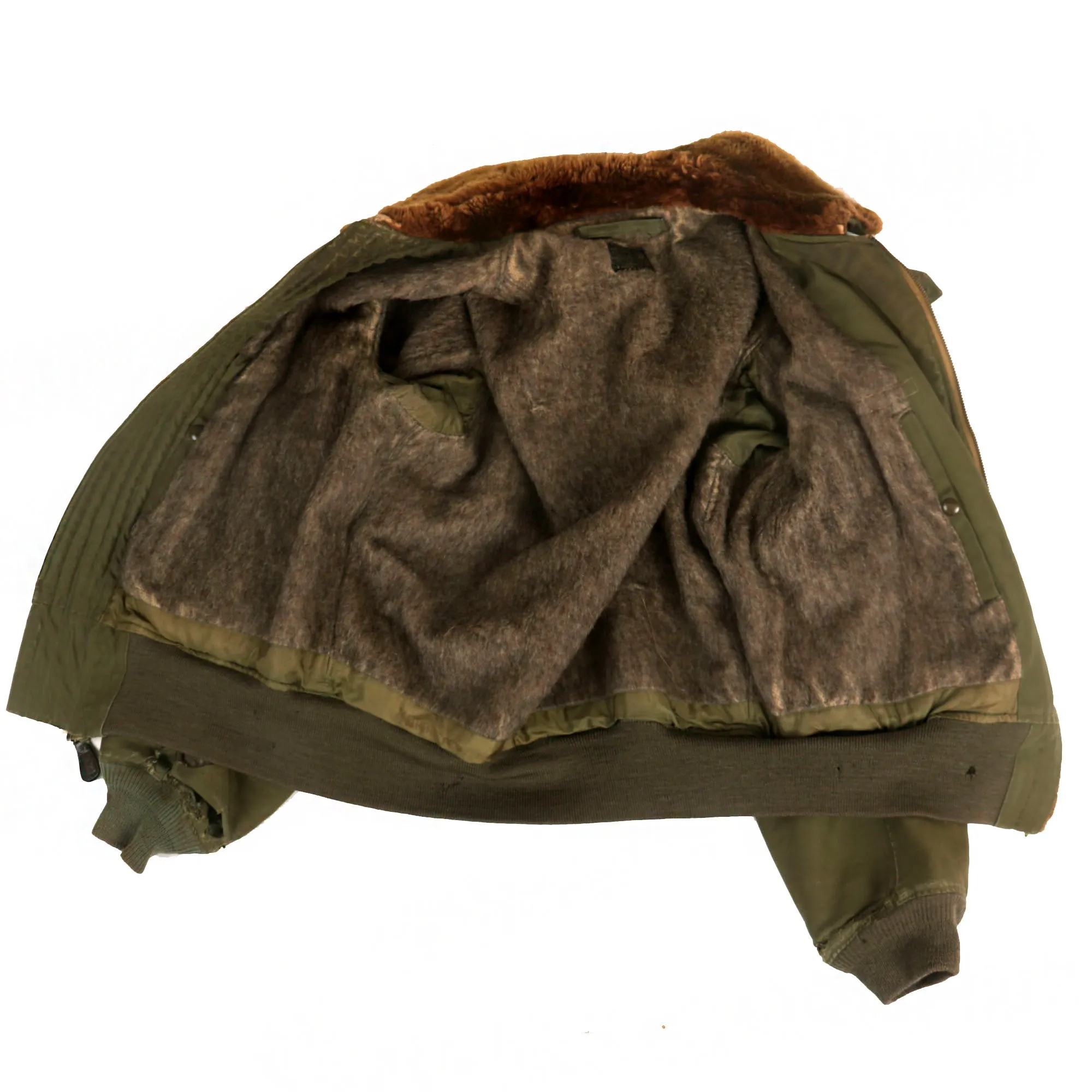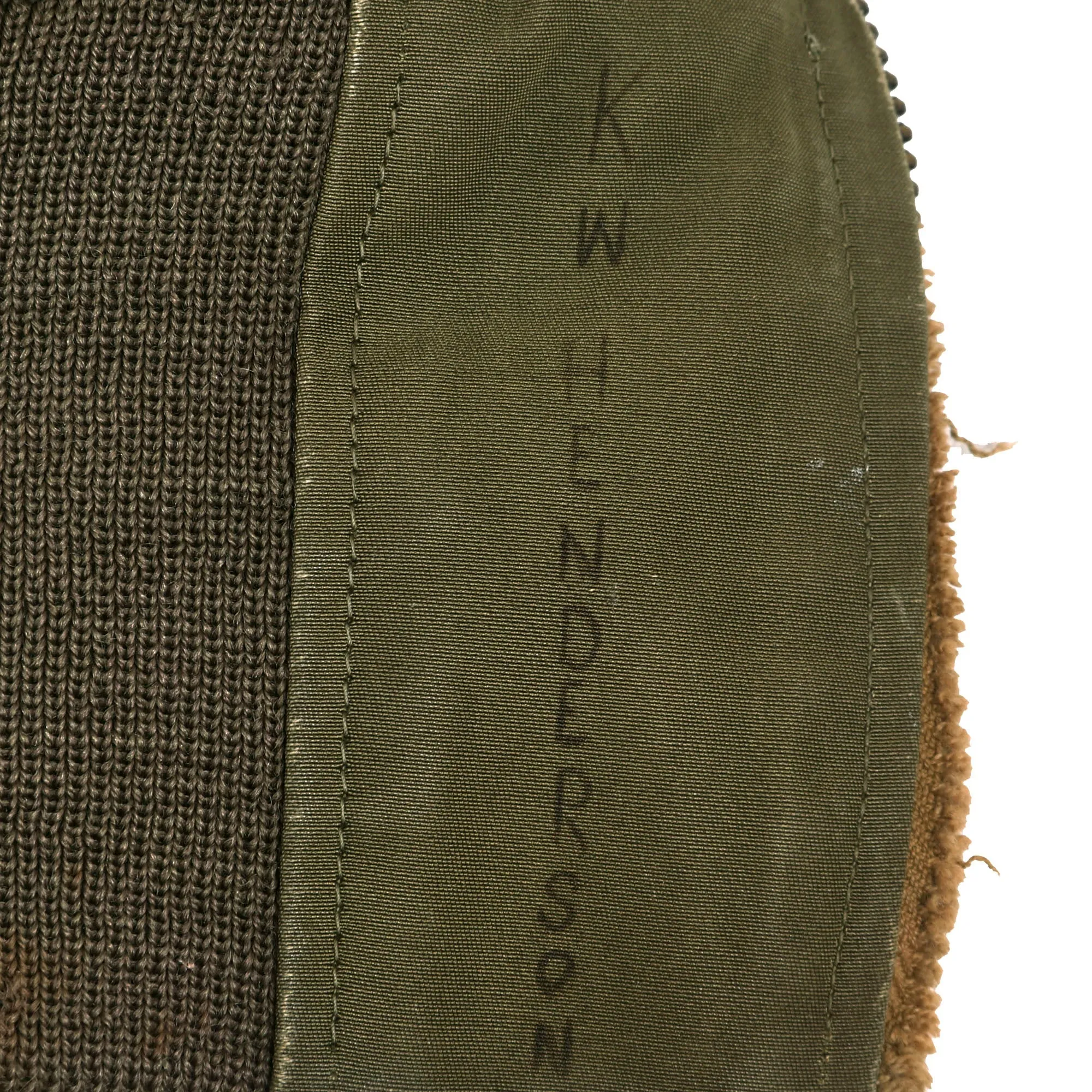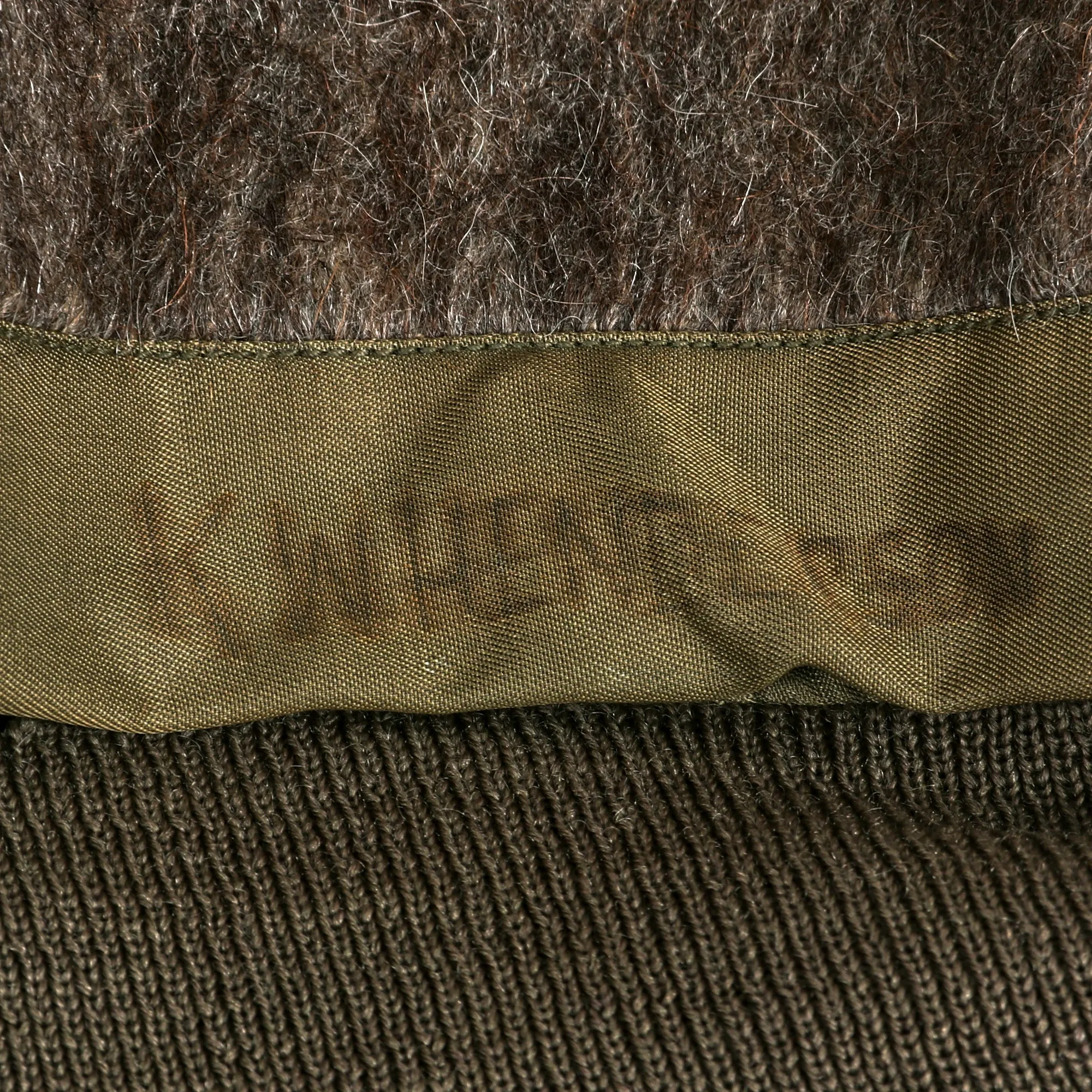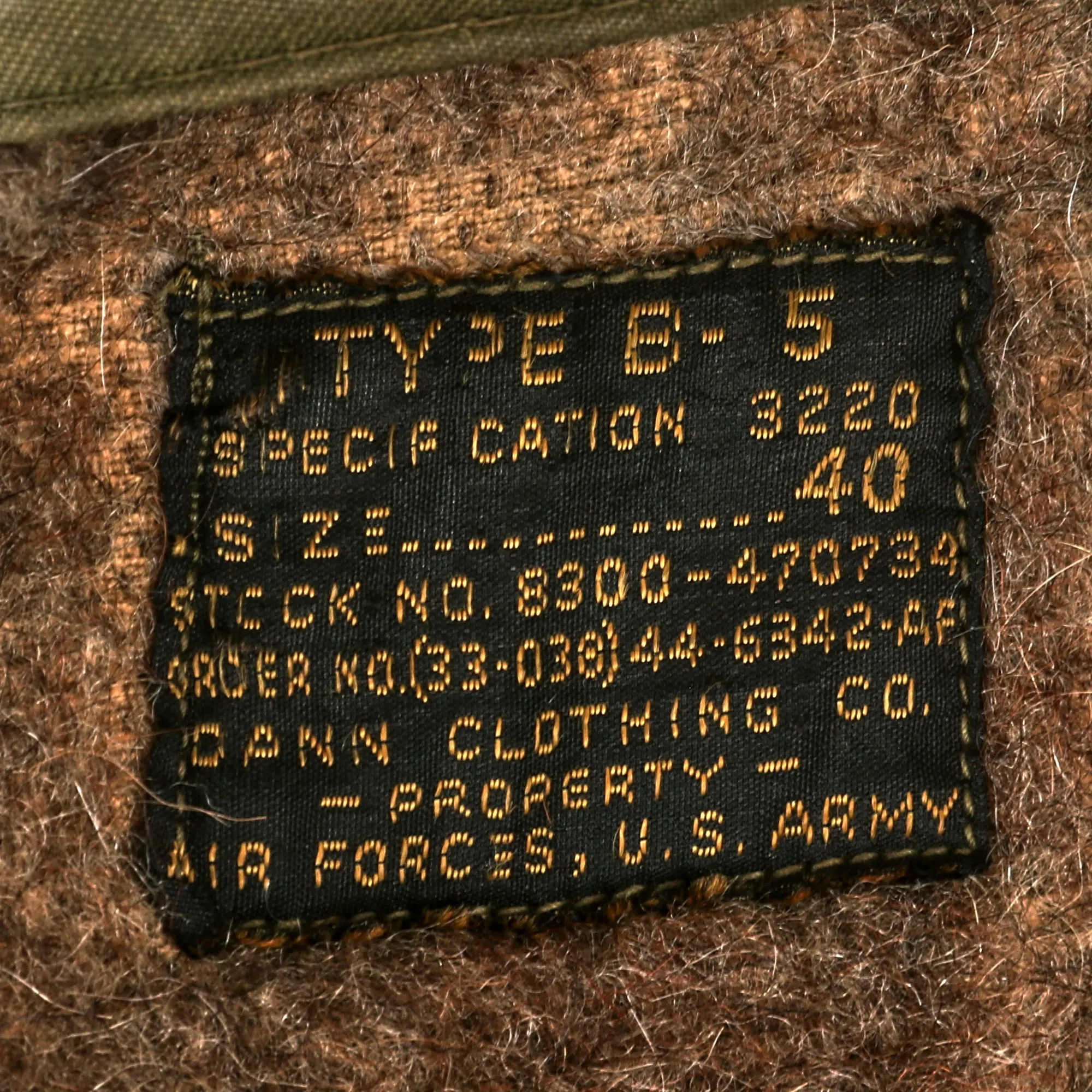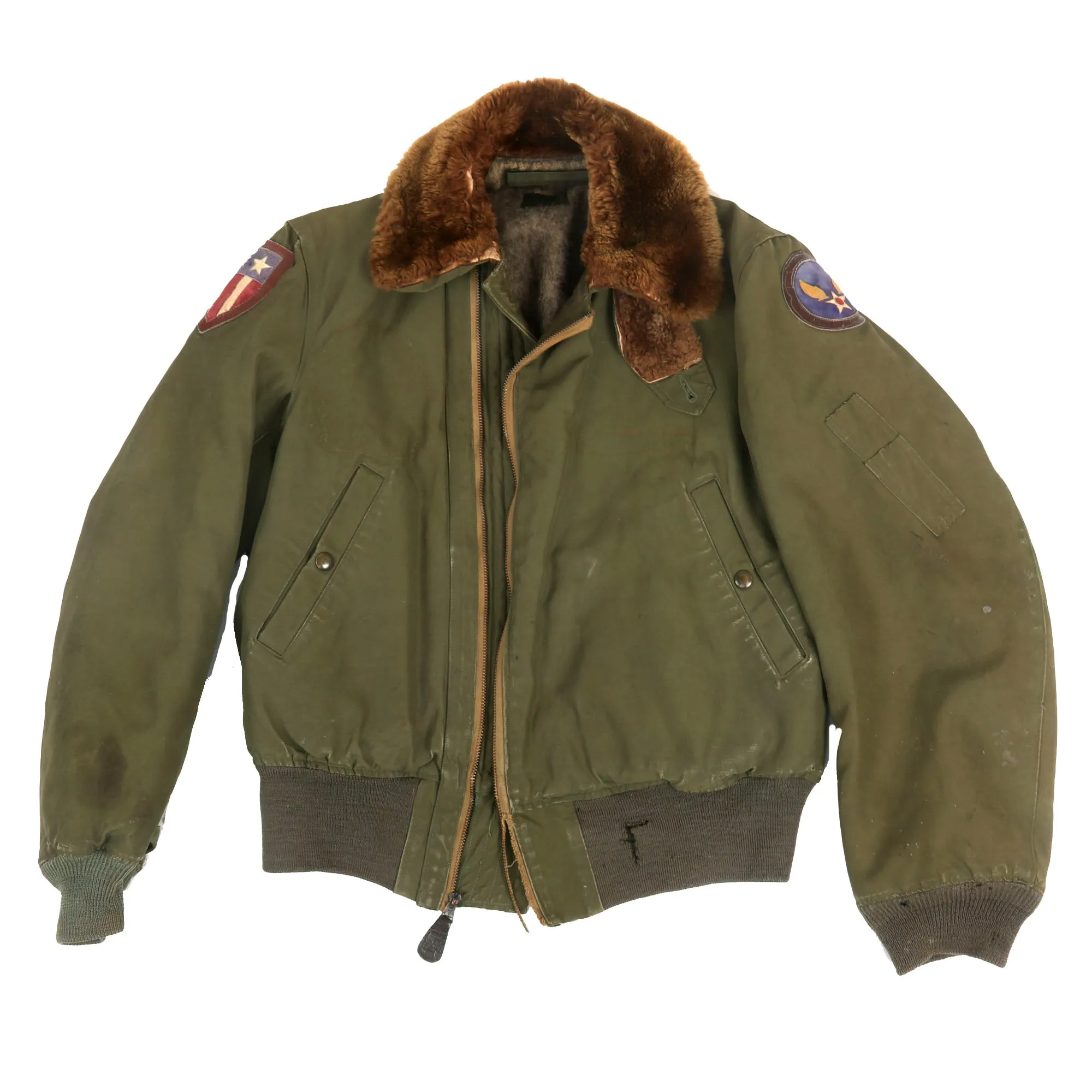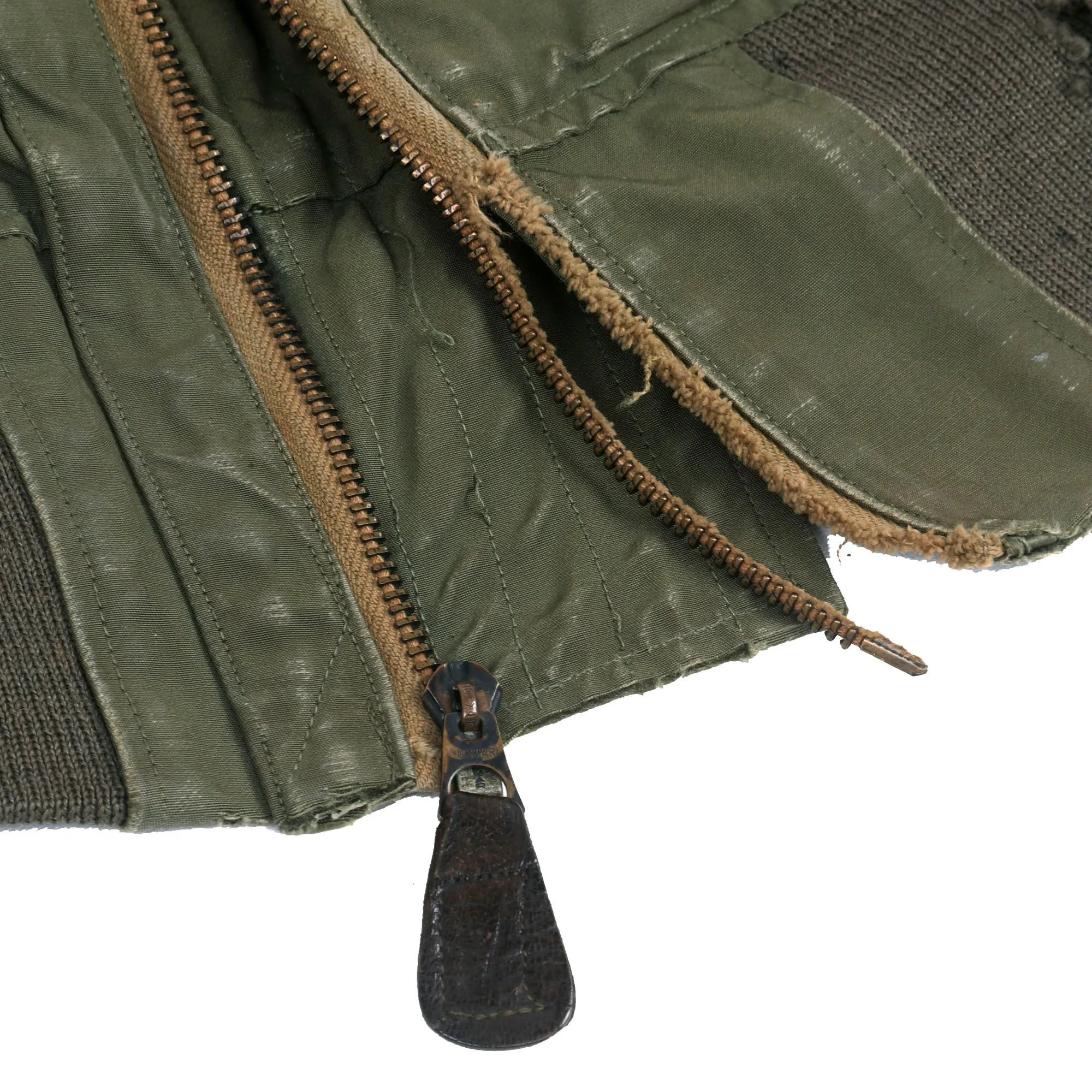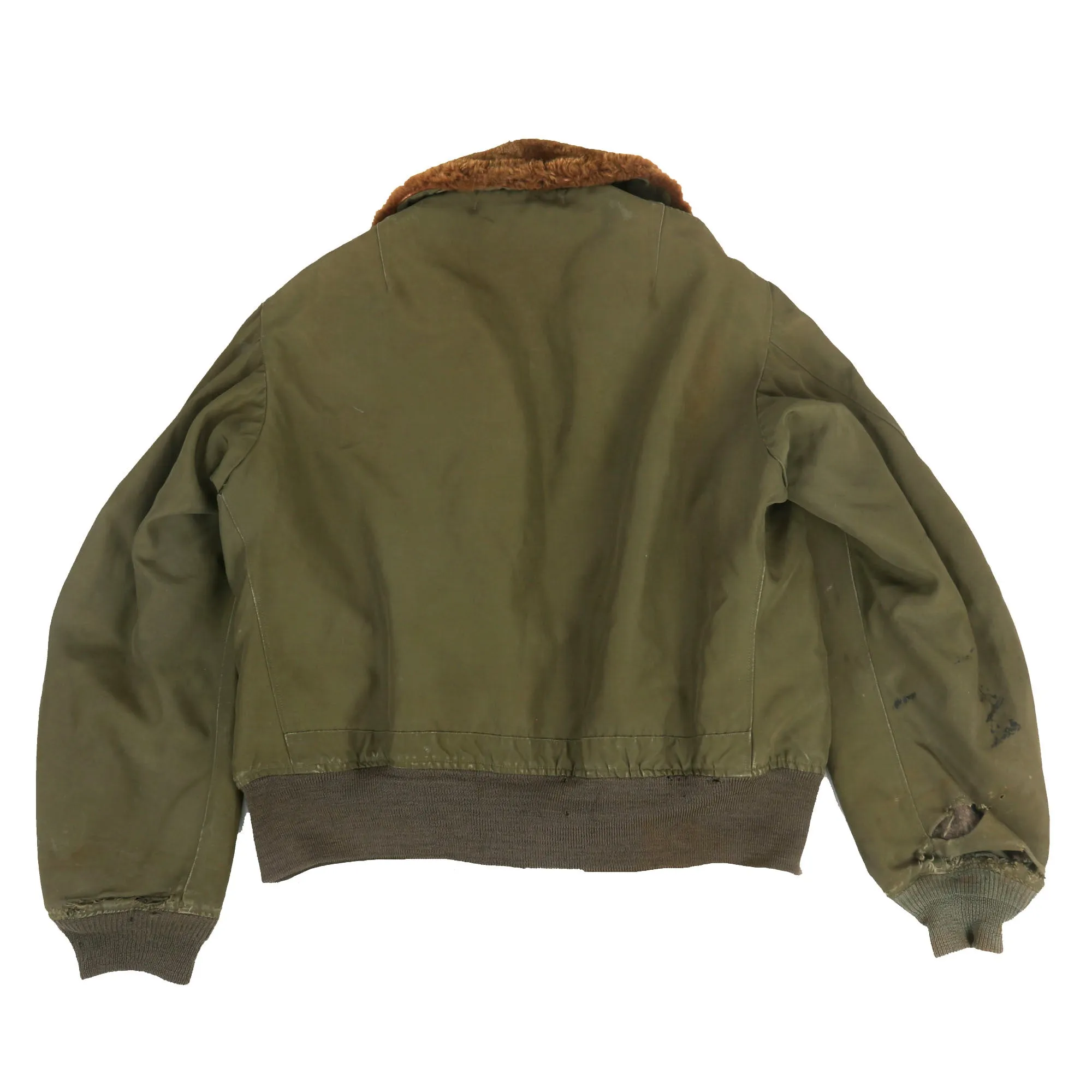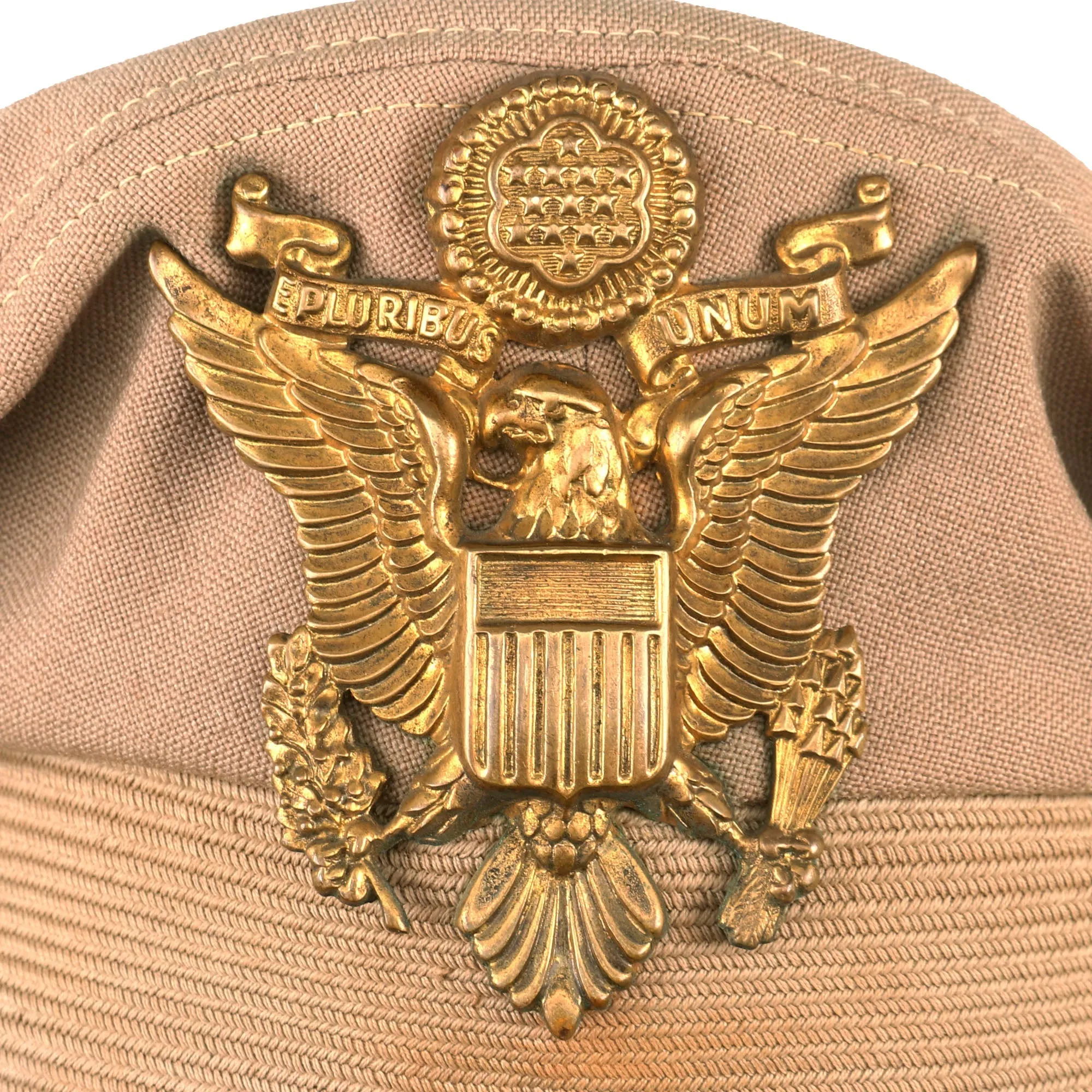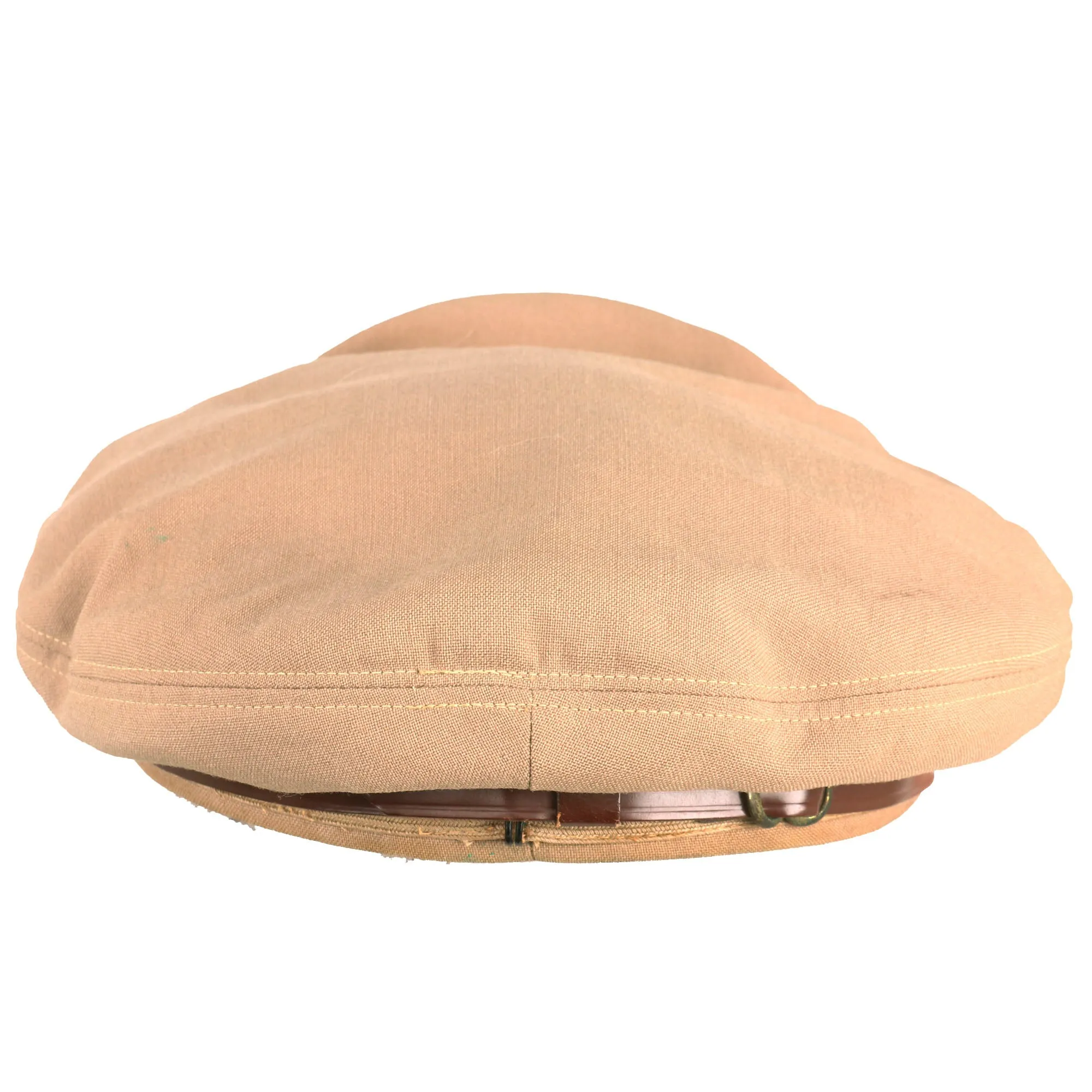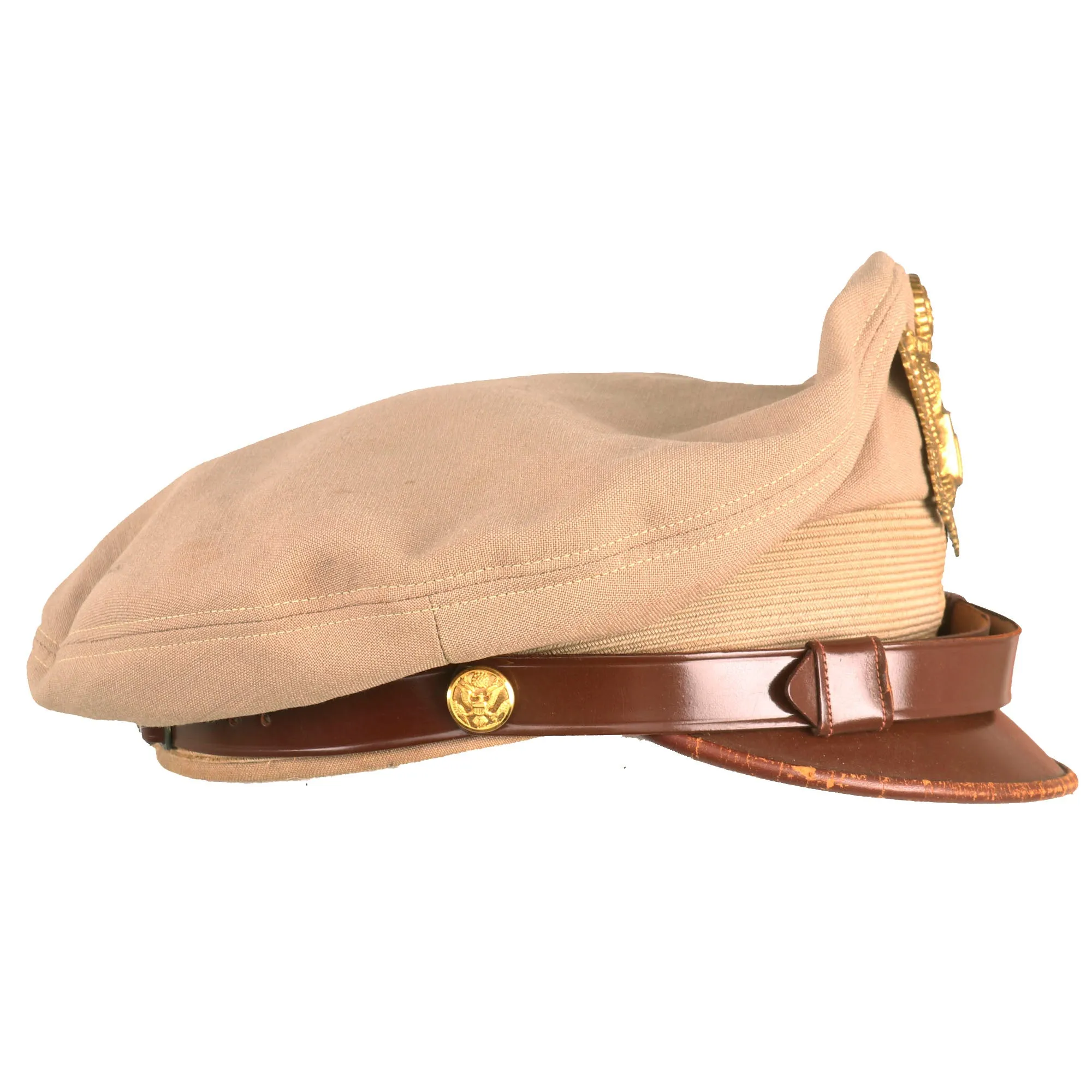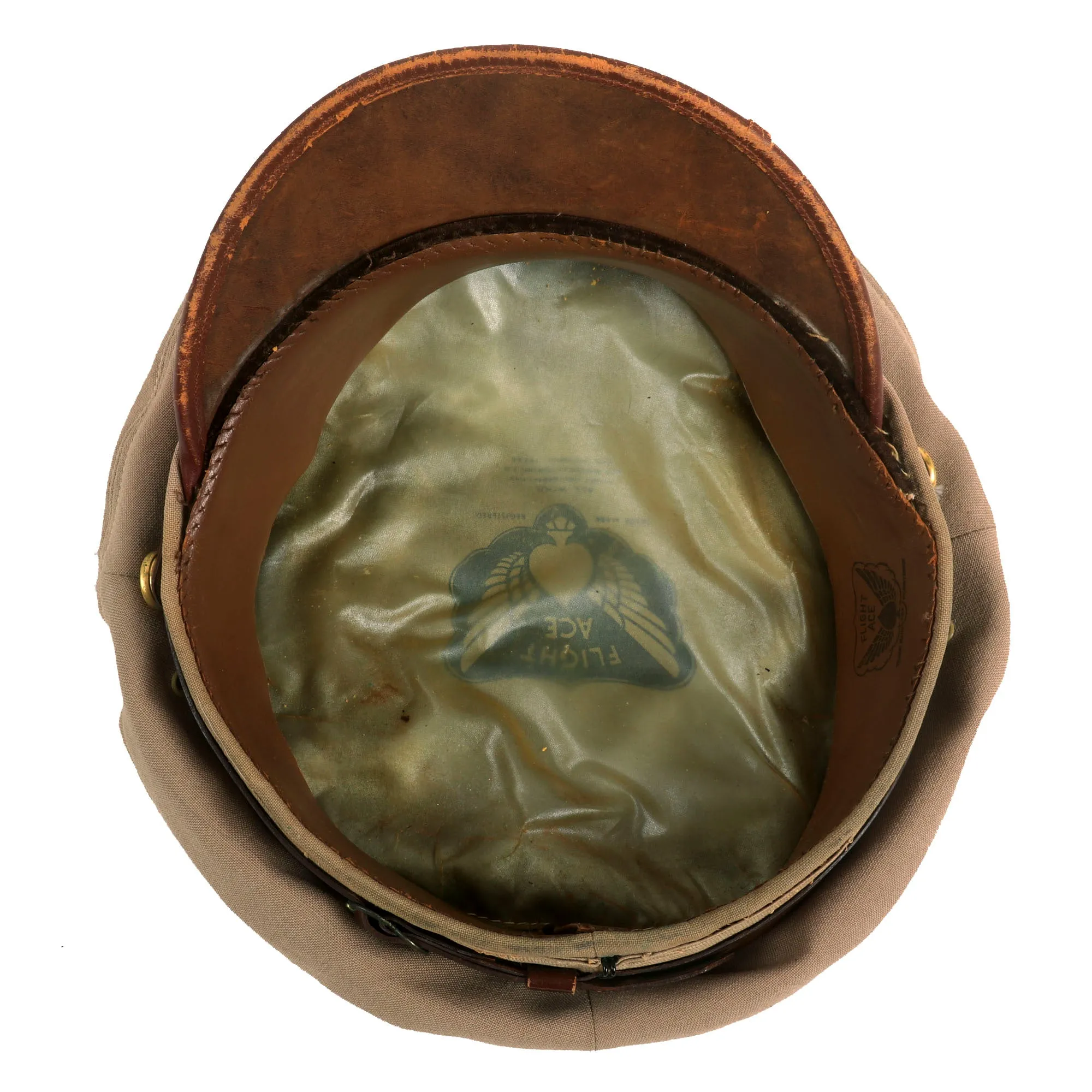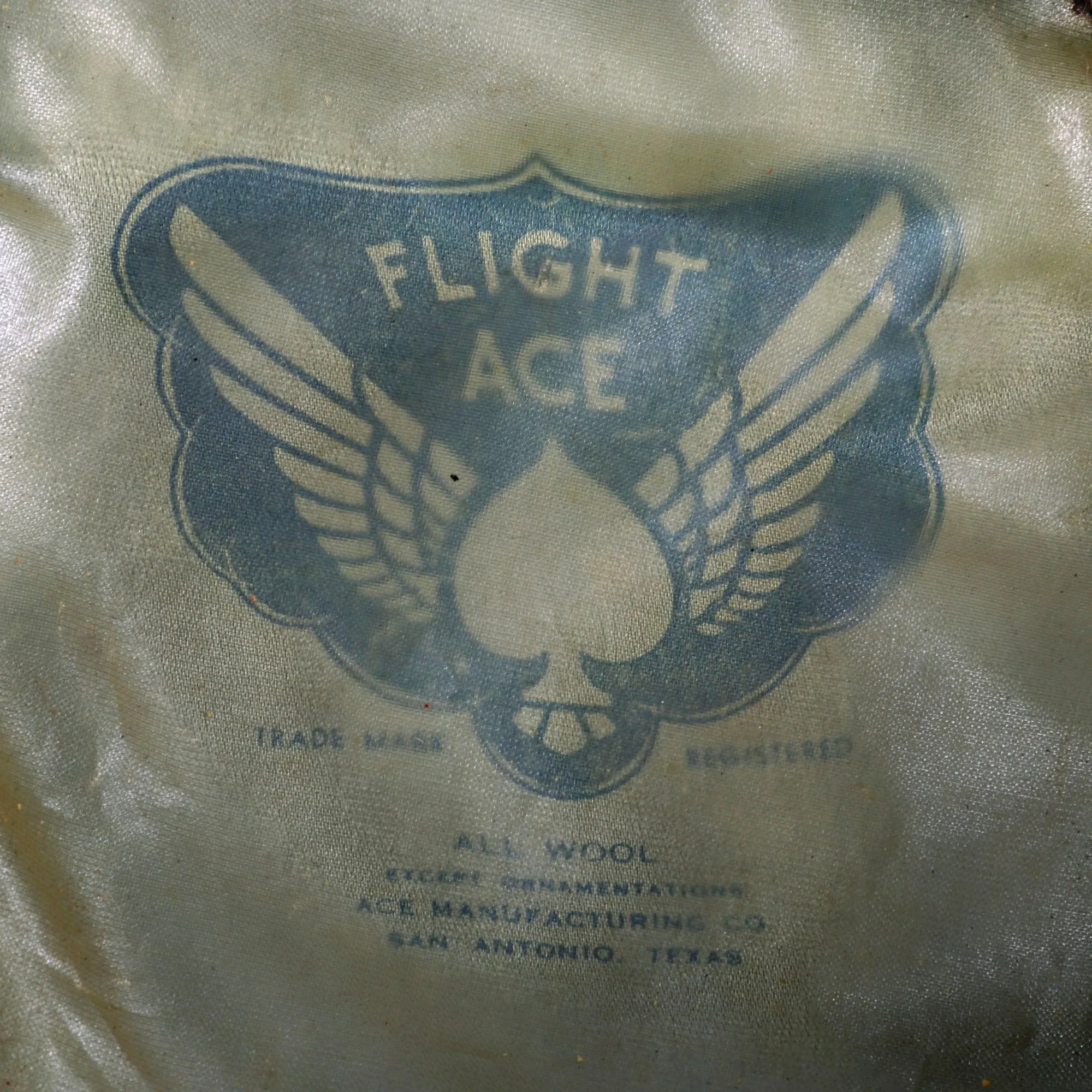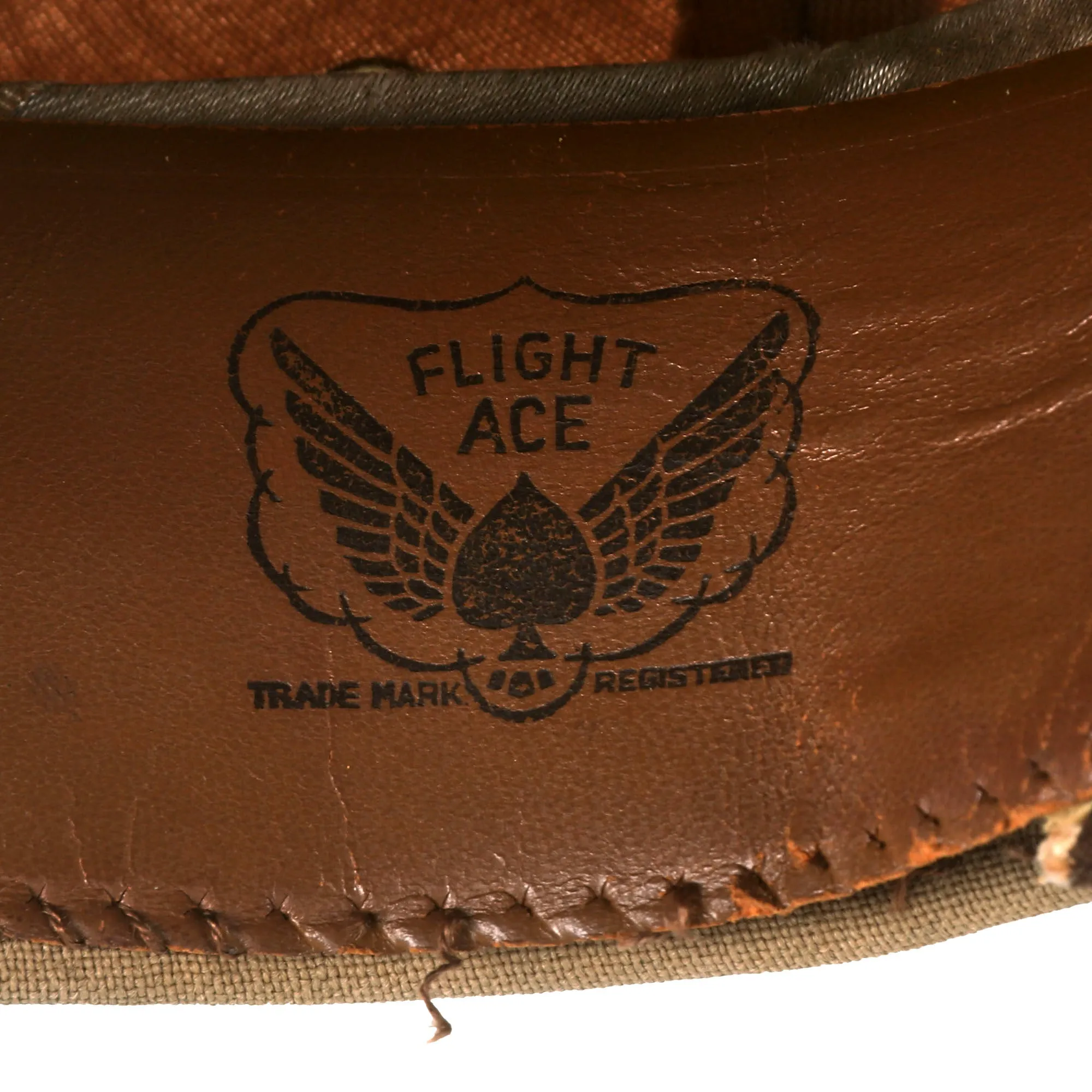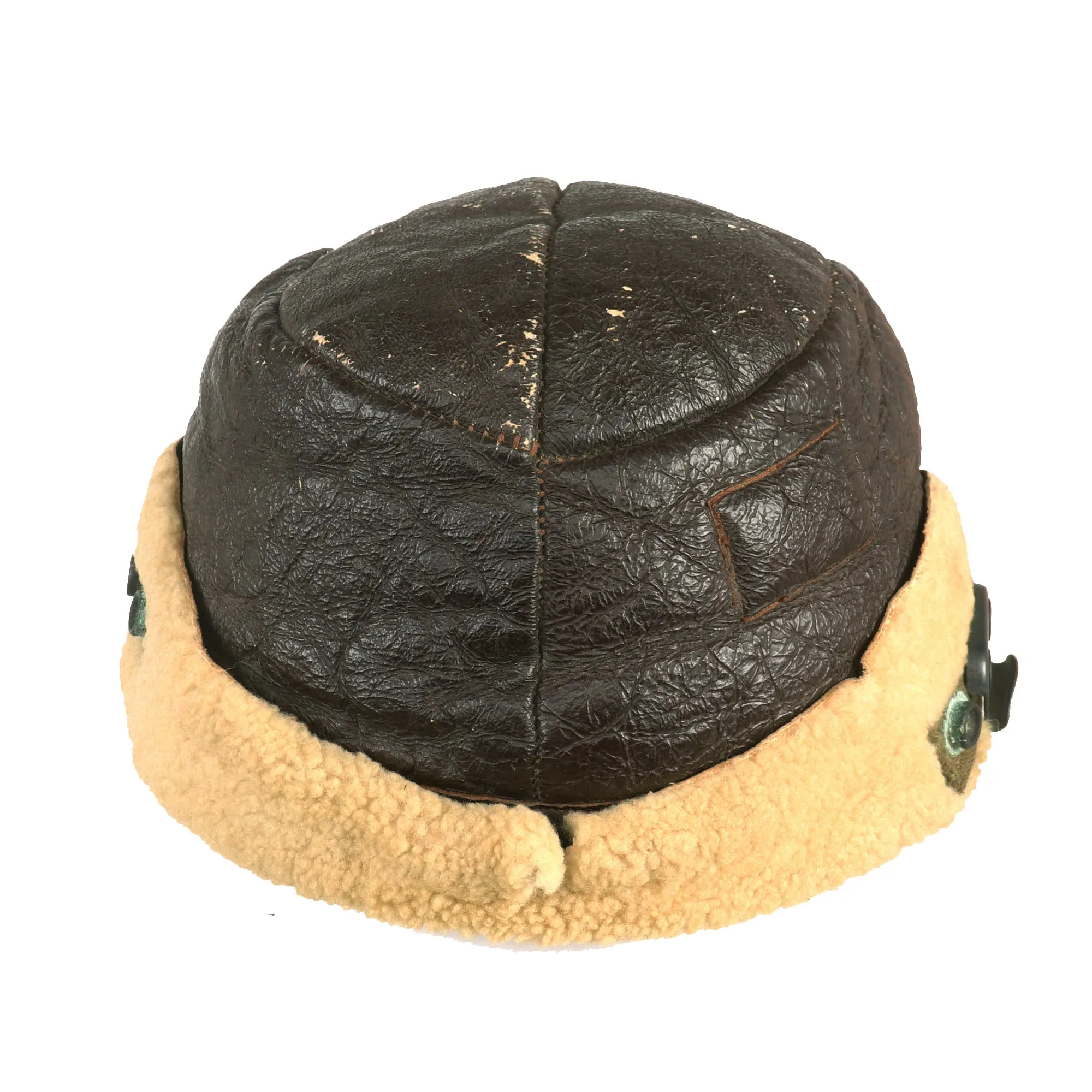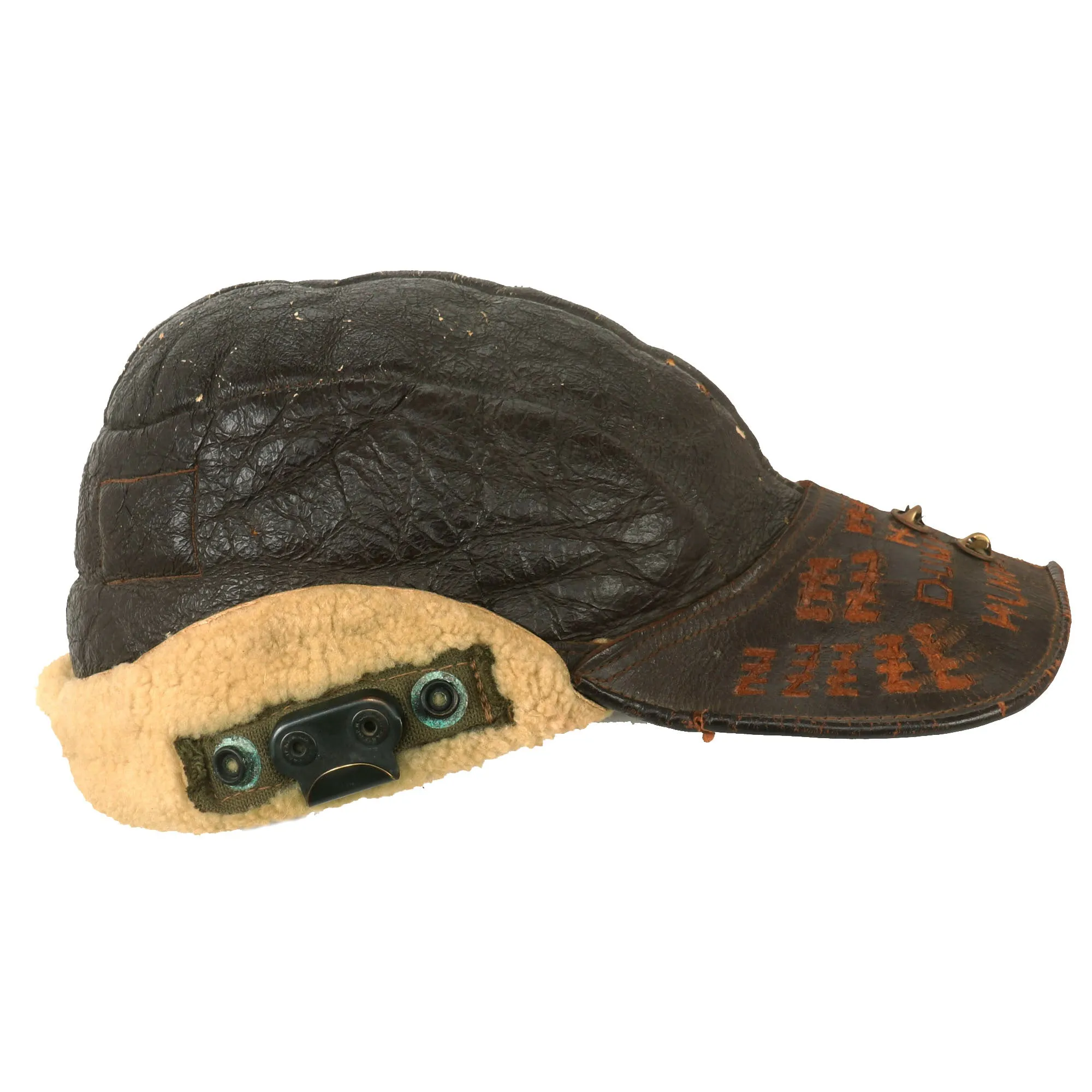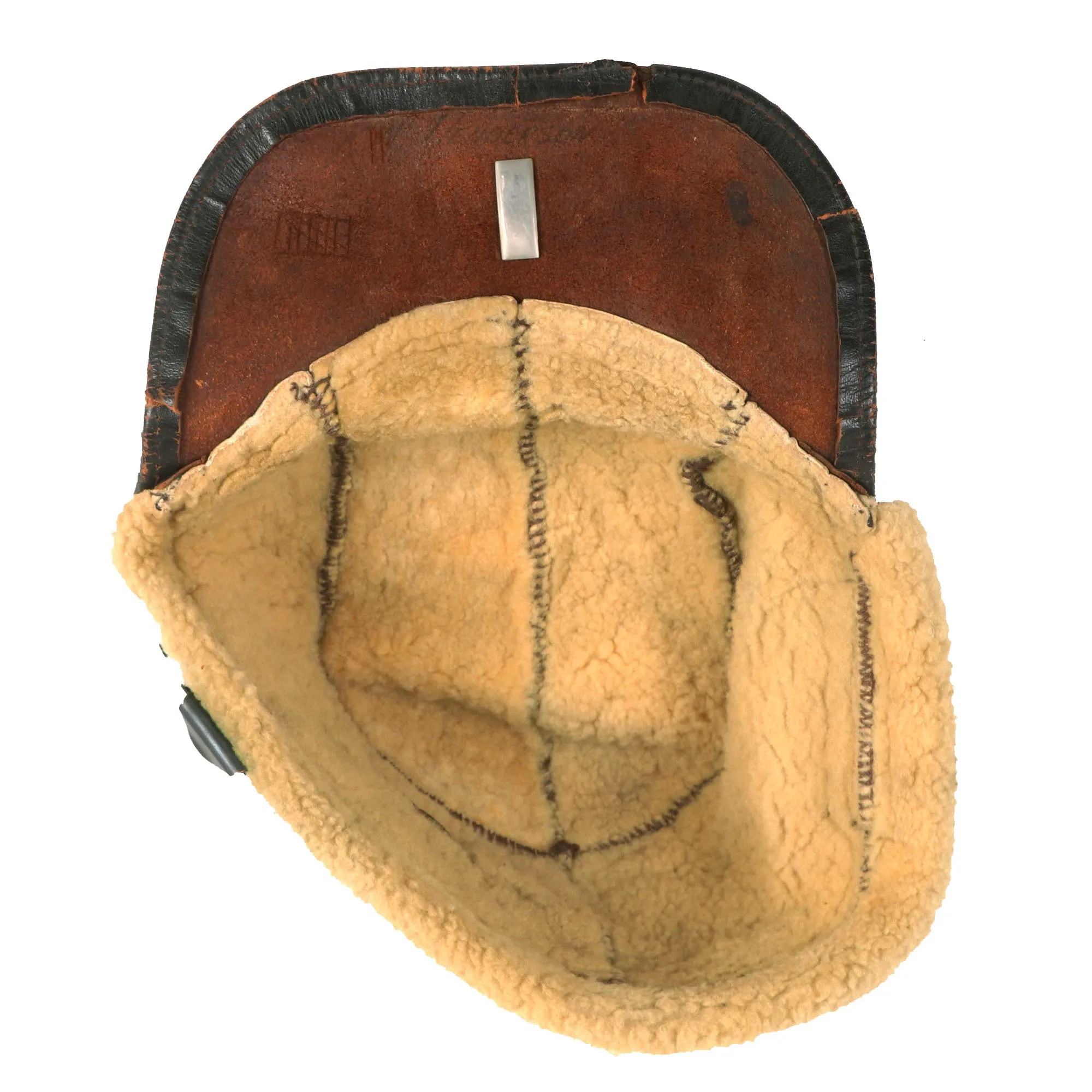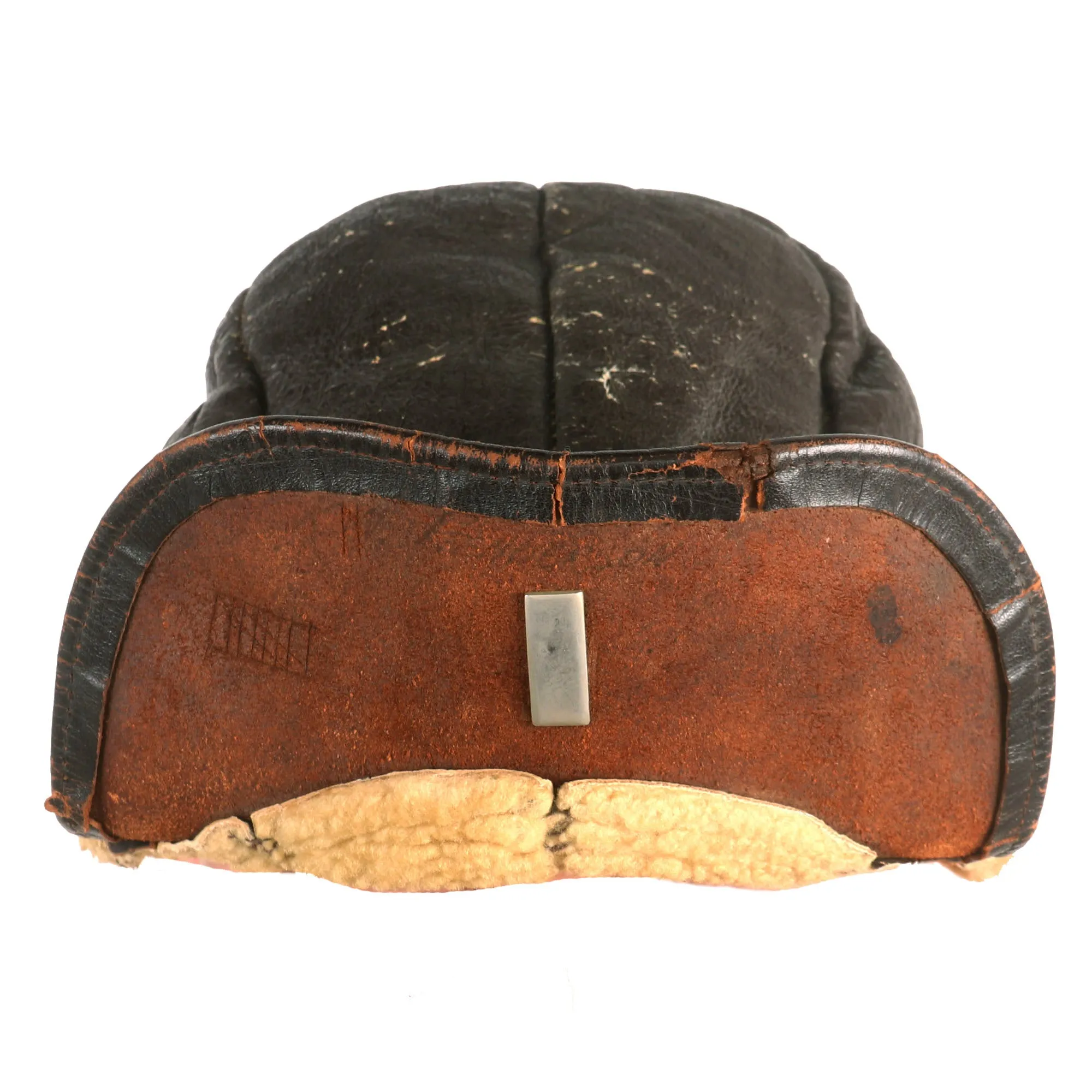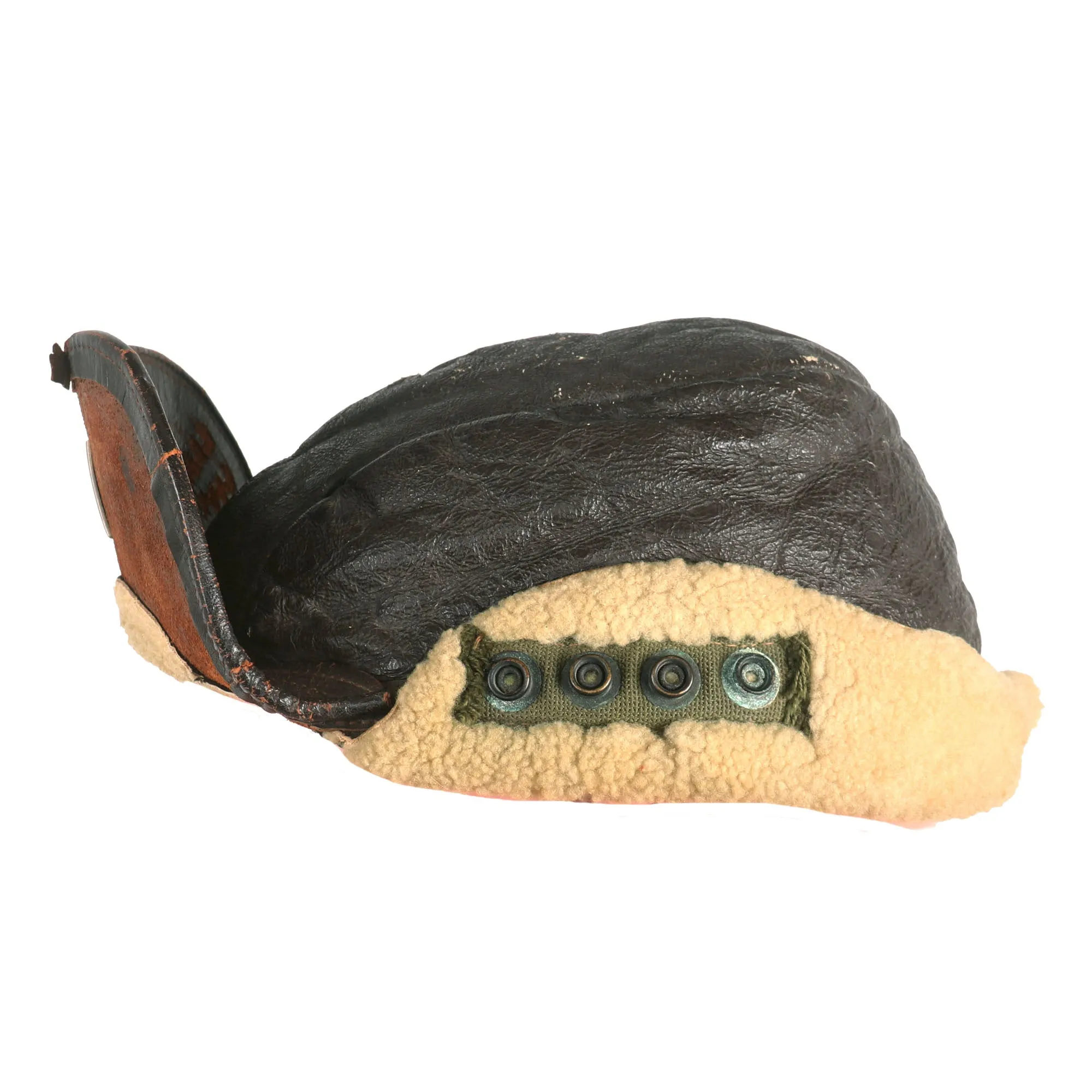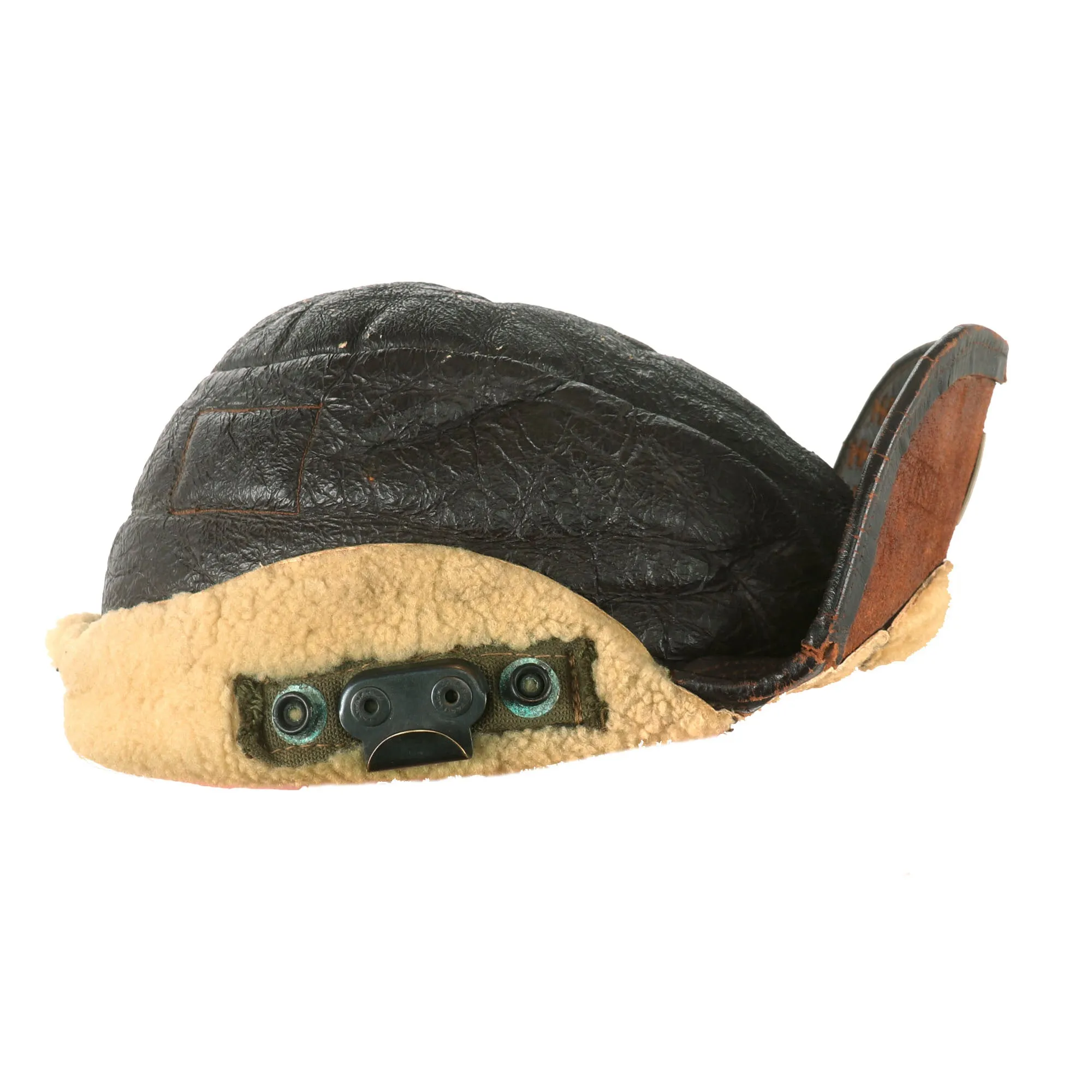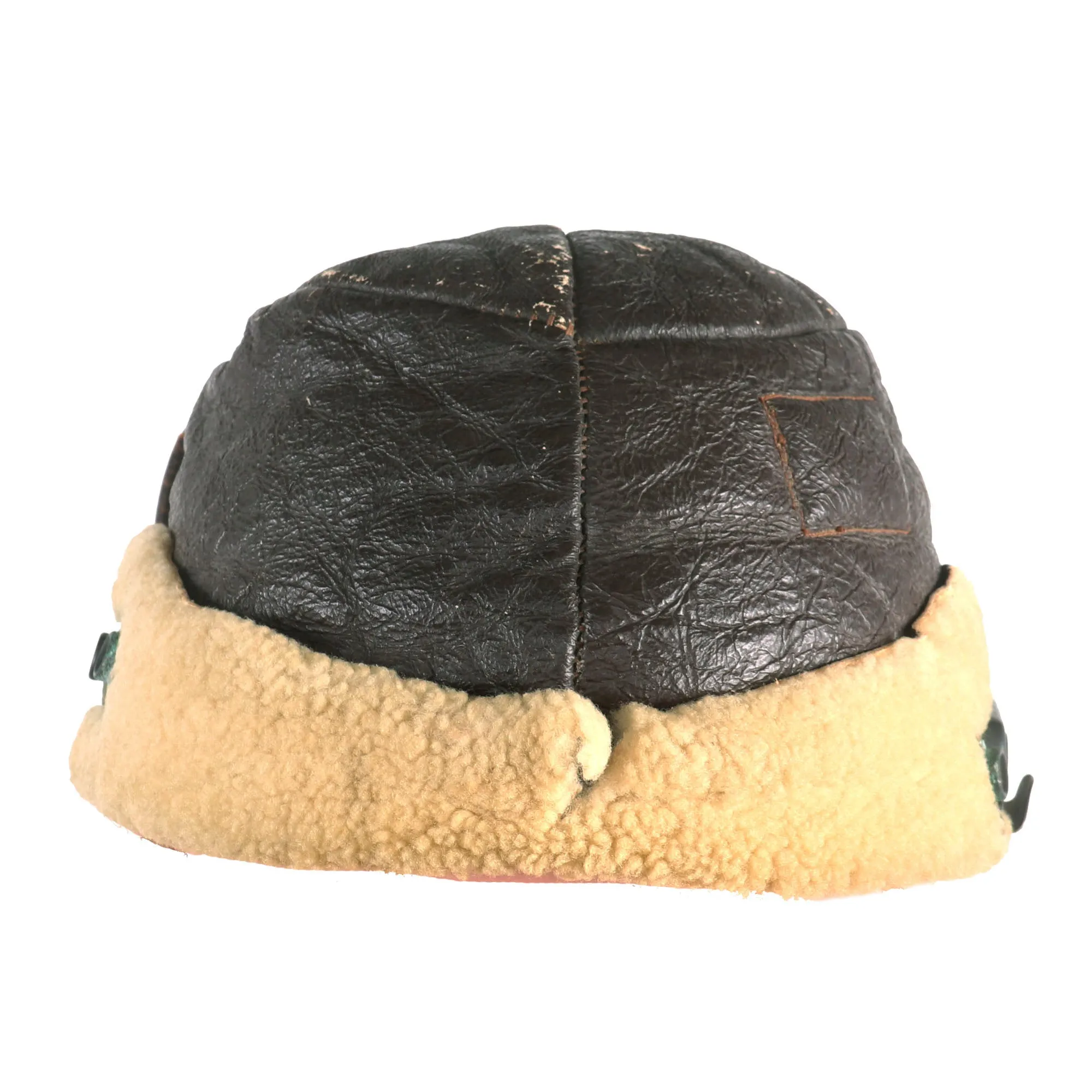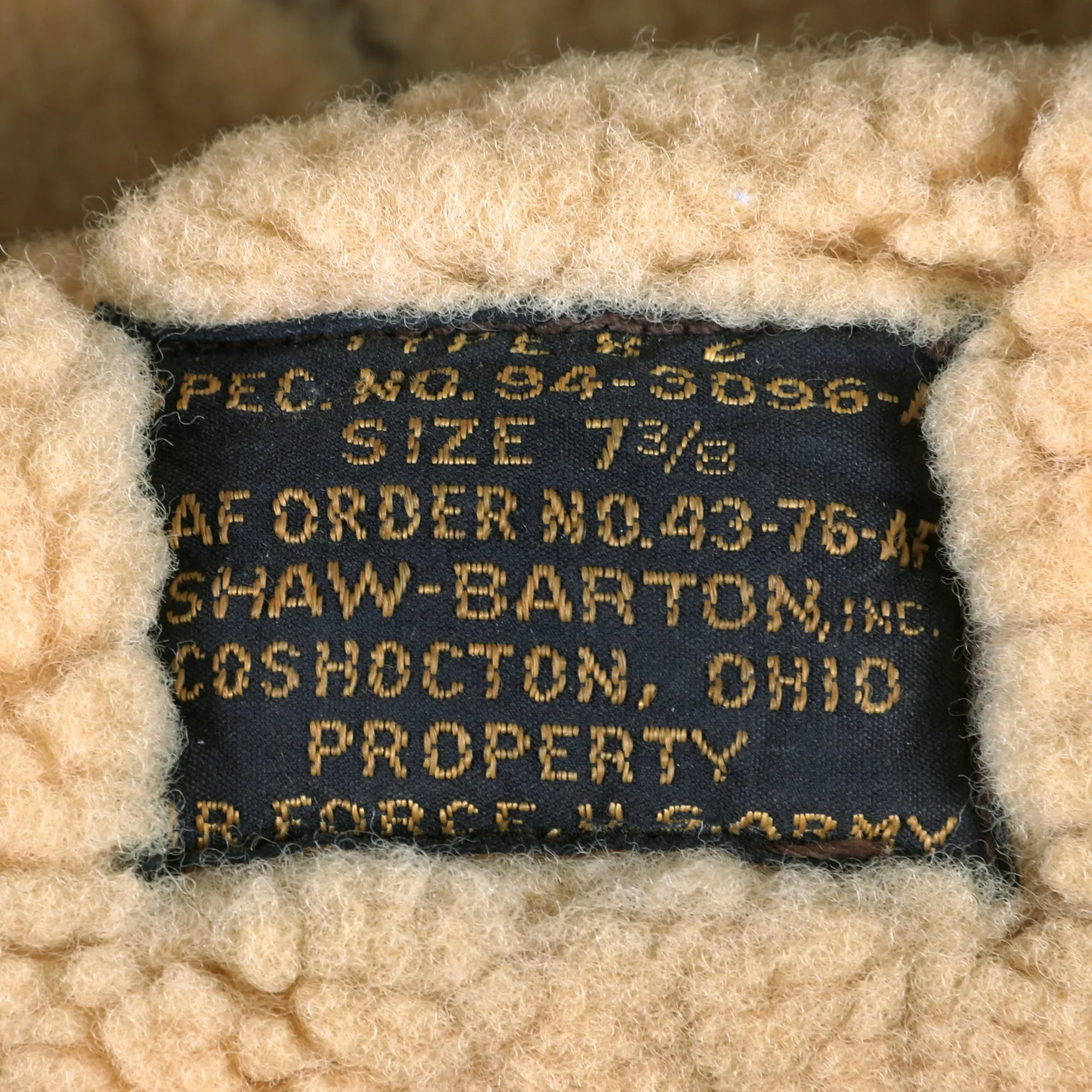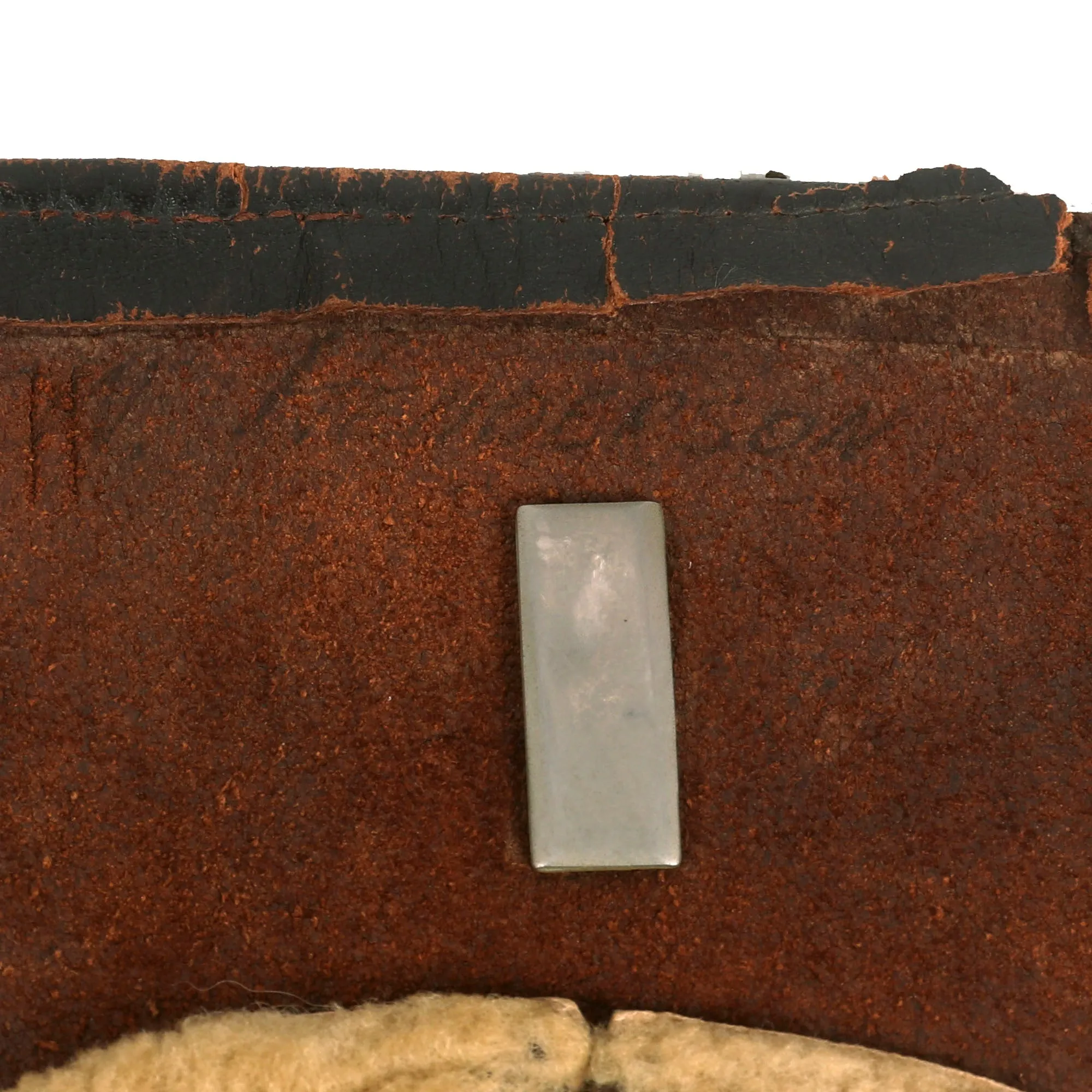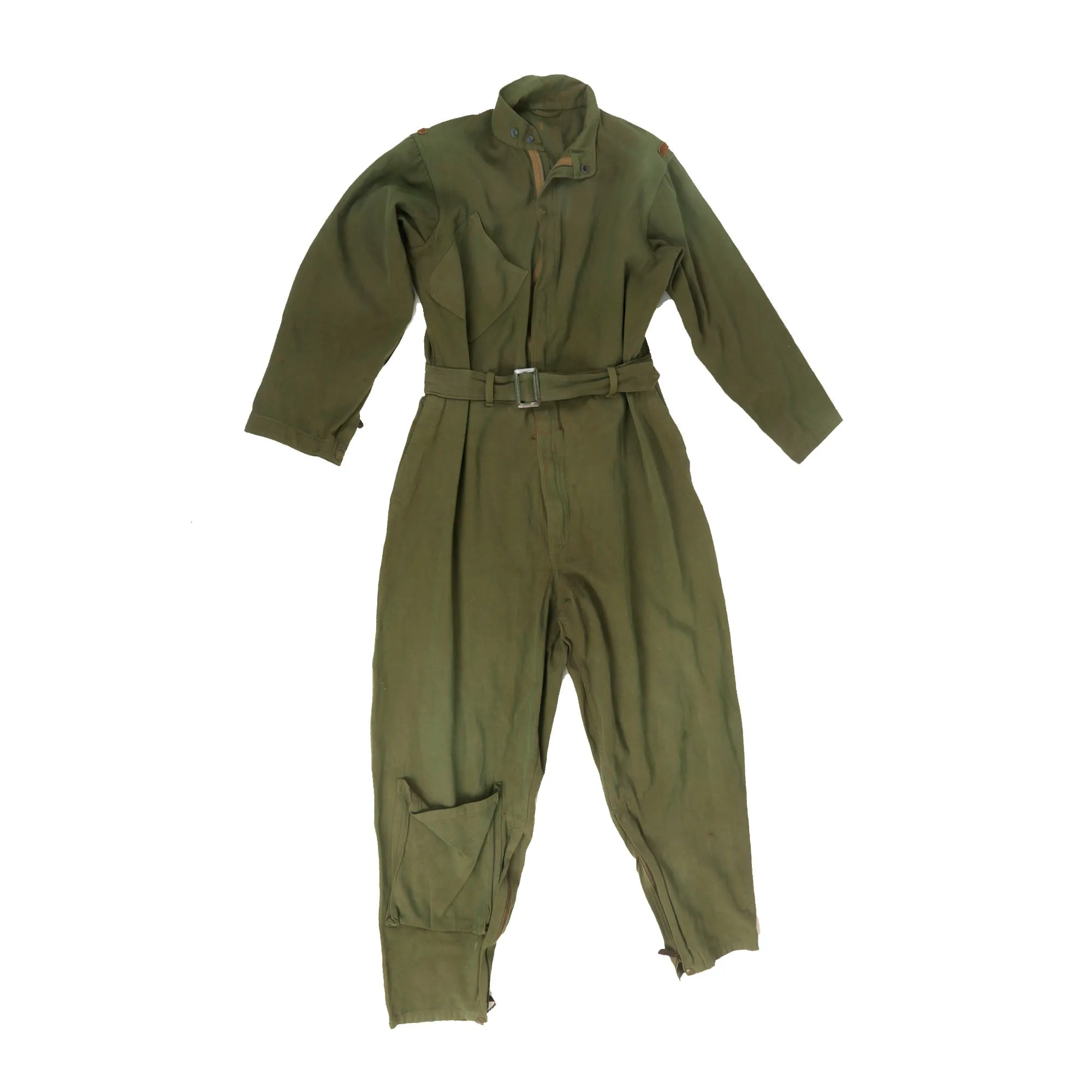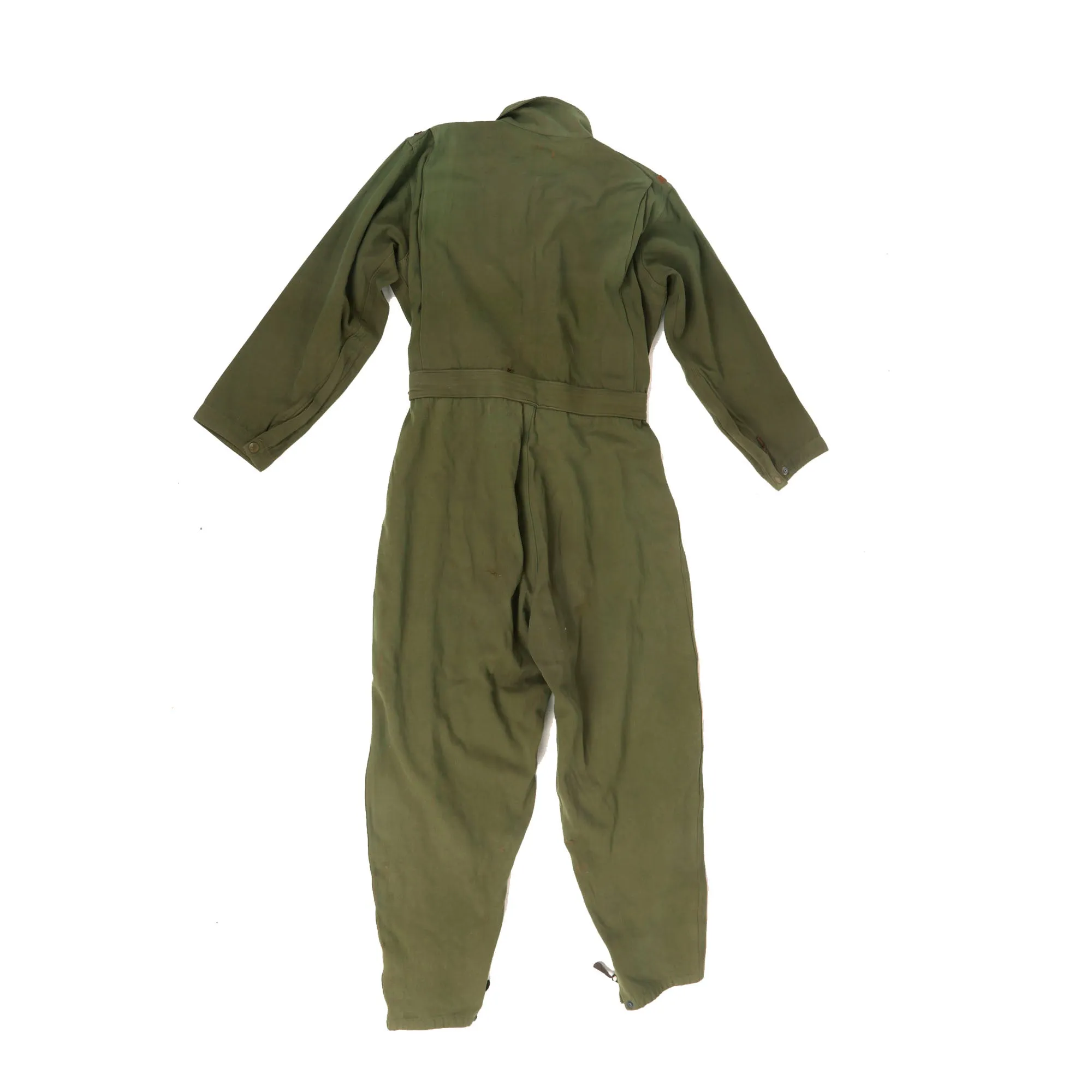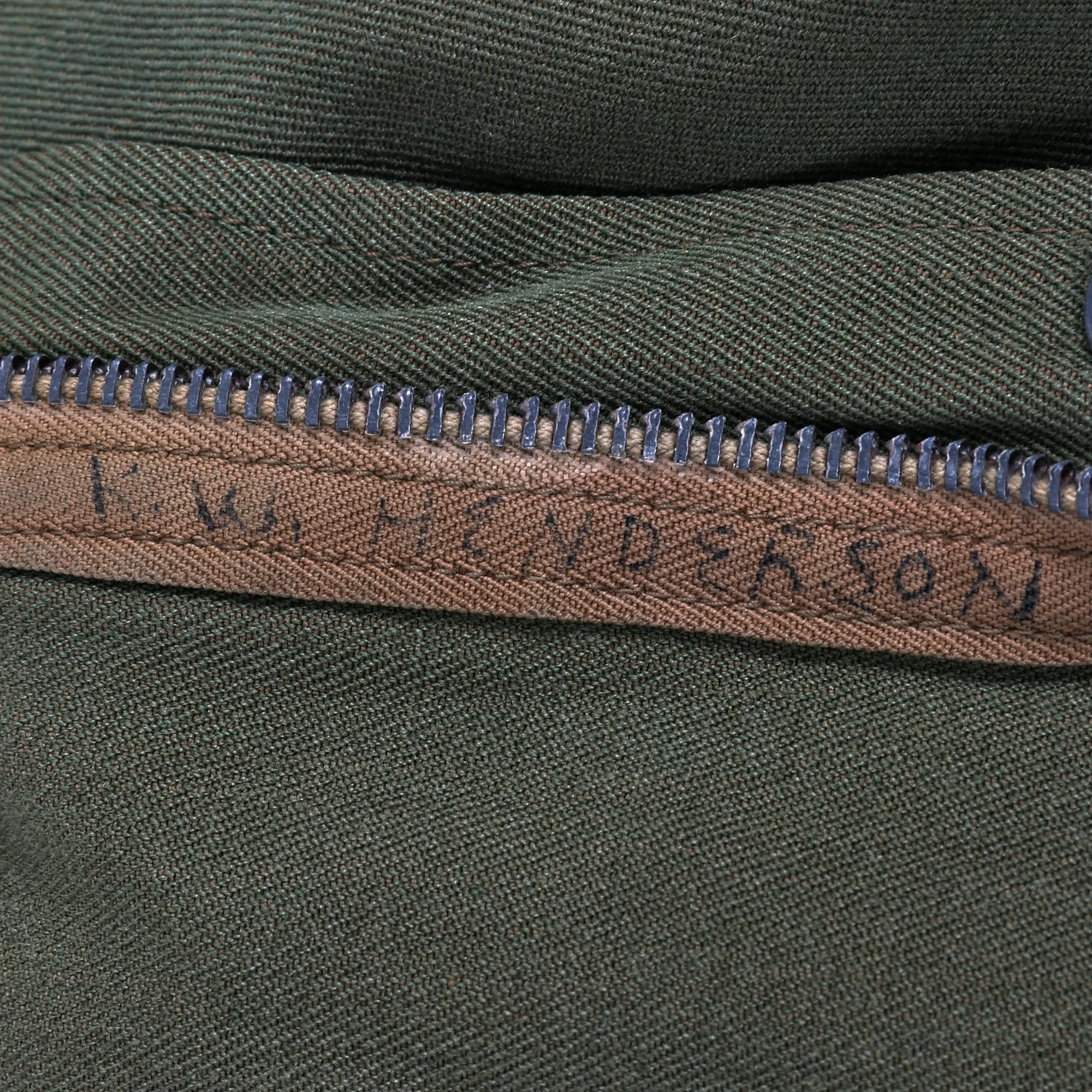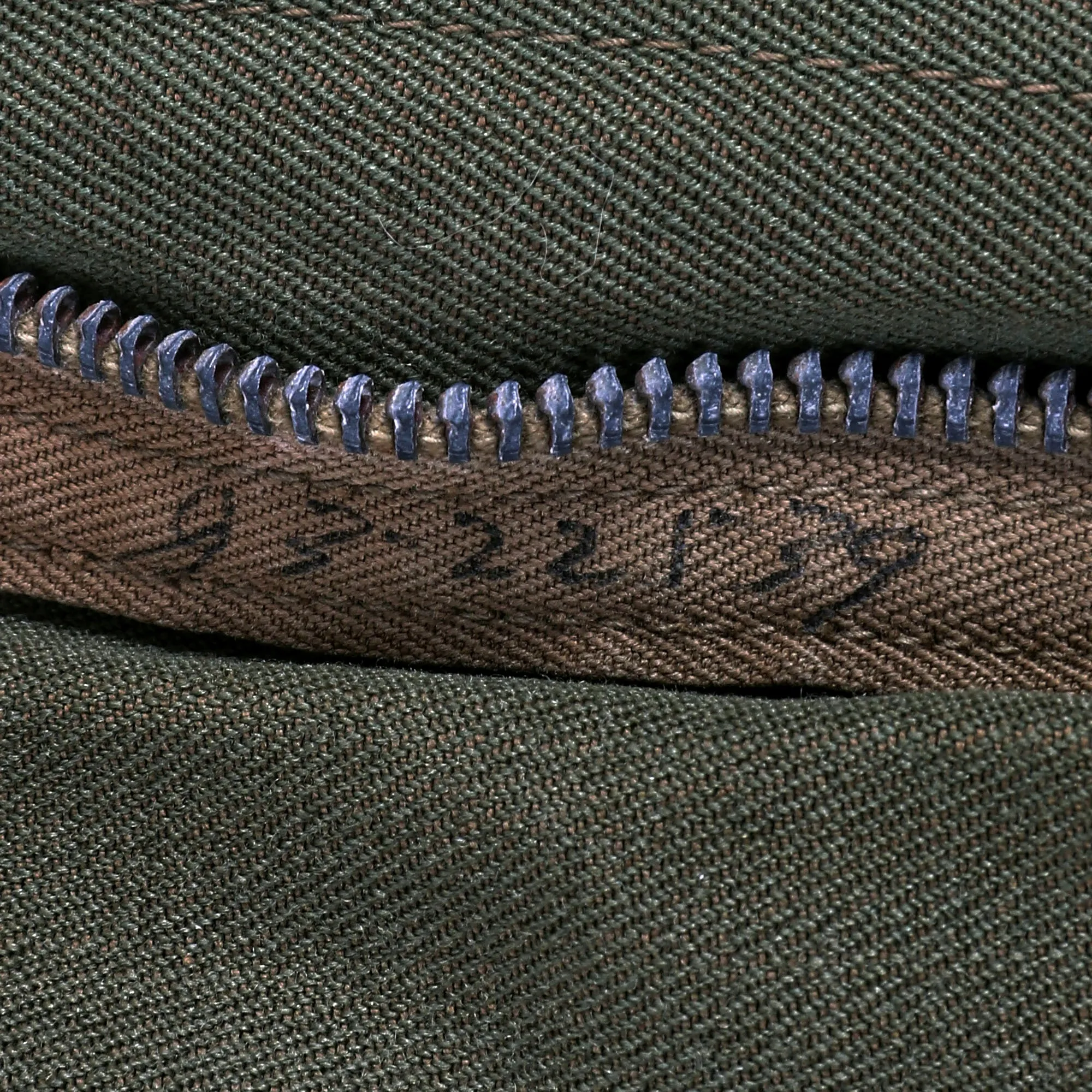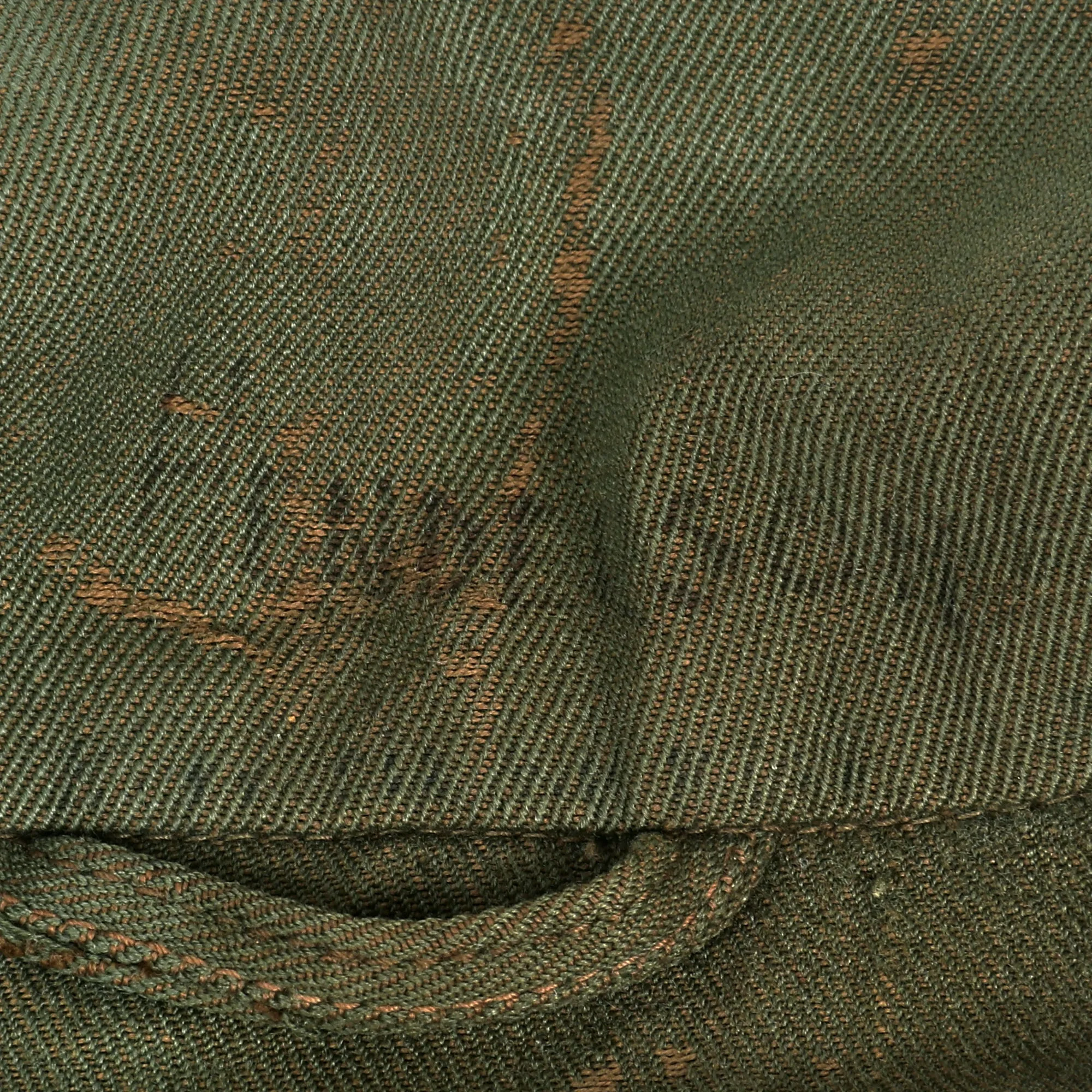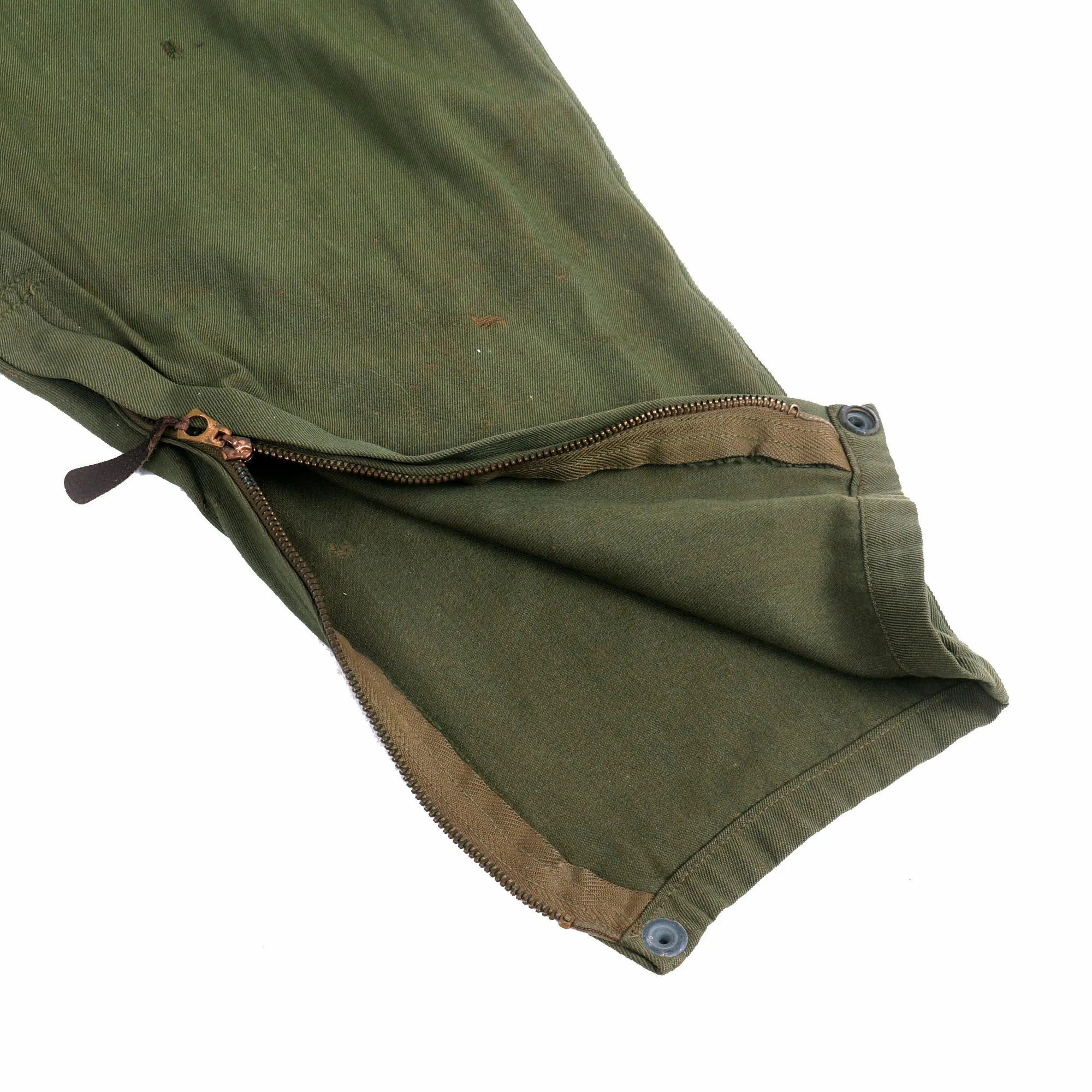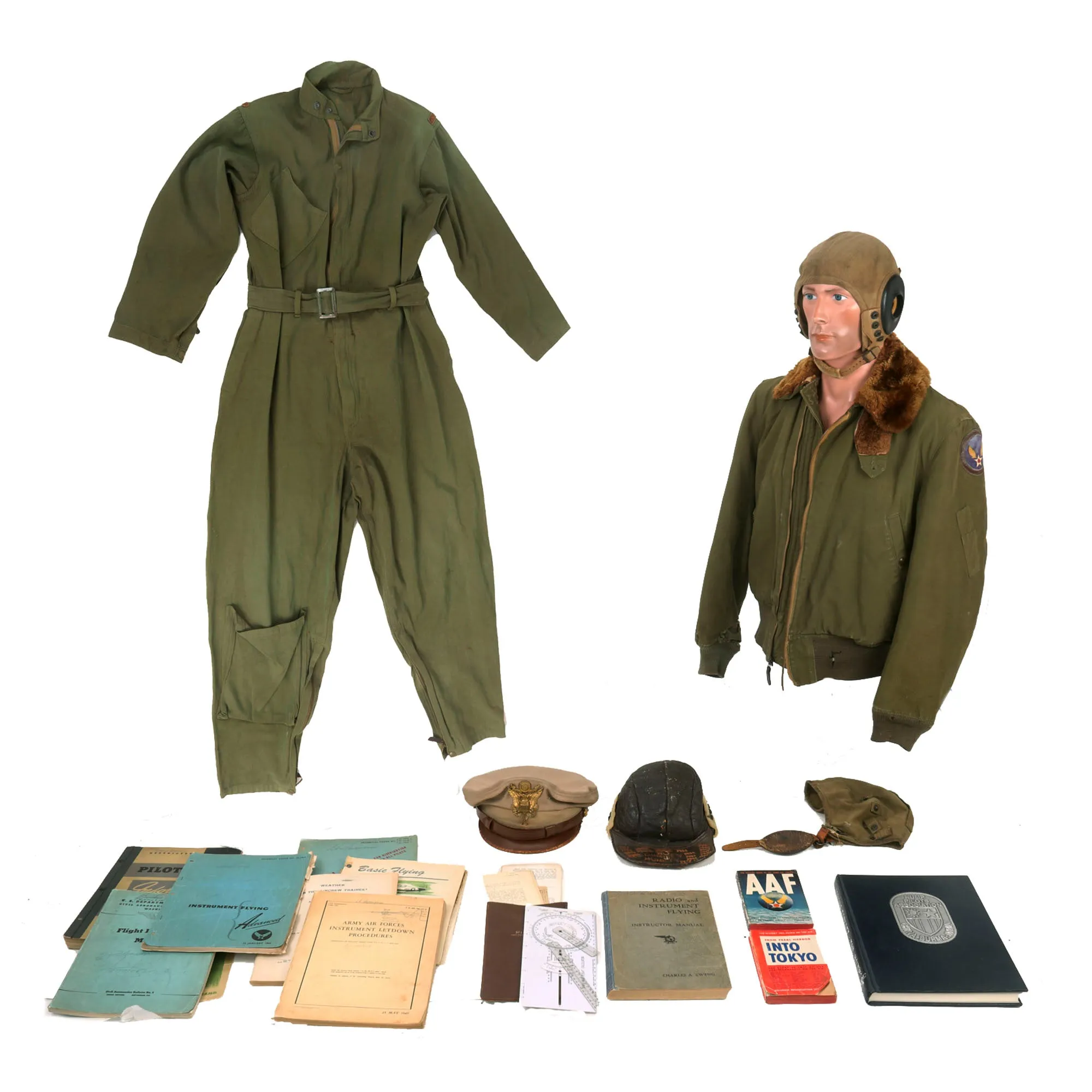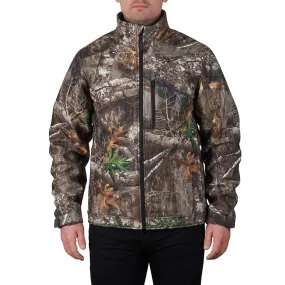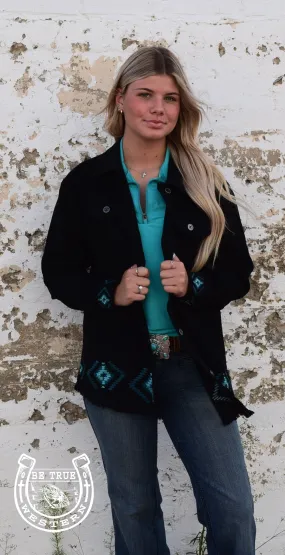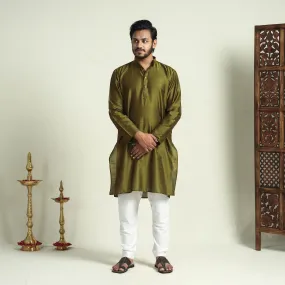Original Item: One-of-a-kind. This is an exceptional grouping from Lieutenant KRIEGER W. HENDERSON, JR. who served as an American officer and pilot that flew 97 missions OVER THE HUMP in the China-Burma-India campaign during World War Two. The following is an excerpt from the “Hump Pilots Association” book, found on page 246m (note the book ins included with this set):
KRIEGER W. HENDERSON, JR., born Covington, KY July 27, 1923, raised Chattanooga, TN. Hooked on flying after 1927 ride in Ford Trimotor in Detroit, MI. Pre-WWII civilian pilot. Was over Charleston Navy Yard on "day of in- famy"-Dec. 7, 1941. Soon thereafter, university and CPT programs for CFI ratings, airline training for balance of ratings. Wanted military flying so instructed WTS program, Memphis, then Army primary, Clarksdale, MS, following CIS, Randolph Field, TX. Became ATC service pilot, stationed 3rd Ferrying Gp., Romulus, MI, delivering single and multi-engine aircraft to modification centers and combat units. Airline training at Homestead OTU, B-24 and C-54, to Romulus, Berry Field and Miami for C-54 delivery to Barrackpore, India. Rode shuttle out of Dum Dum to Tezpur (1327th AAFBU) in wildest ride ever in a C-47, swore we were inverted more than once!
Transferred to Jorhat (1330th AAFBU), still on C-87s and C-109s, several trips before ever getting first good look at the pile and was sorry when finally did! Flew gasoline, cargo, and troops mostly to Chengtu, Kunming, Lushien, and Burma. Same miserable experiences as everyone else with weather, lost engines (but no turnarounds!), and other malfunctions. So impressed by aluminum trail, transferred to Search and Rescue, Mohanbari, (1352nd AAFBU) for terrific flying, C-47, B- 25, Norseman (UC-64), L-5, L-1, including an L-5 beer drop to a suffering ground party. Al- most put himself in the trees making sure that beer got delivered! Shortly thereafter, put out of action for a while by Sikh warrior in deliberate hit-and-run accident in Dibrugarh. Last flight was to abandoned British fighter strip between Bhutan and Nepal delivering crosses to ground party; C-54 load of homebound troops (good friend was co-pilot) hit mountain near Everest. Rerated to military pilot, Chabua, 1945. Rotated home (116 trips, usual decorations) January 1946, 31-day ride on Gen. Stewart.
A really memorable experience pounding through the South China Sea, watching the old tub come unglued! Back to Air Training Command as instructor at Goodfellow and Randolph Fields in CIIS, plus Chinese and Brazilian students in AT-6 night, instrument, and formation flying. Separated 1947 (resigned reserves 1956). Returned to Citadel as civil engineering vet student. Received degree in 1950. On CE staff there for two years, all the while flying for "Bevo" Howards' Hawthorne Flying Service; instruction, charter, airshow work flying Norseman, UC-78, clipped wing cub, and Bucker Jungmeister (now in Smithsonian). Then, Fairchild Aircraft structural engineering, degree in Aero Eng., followed by 30 years' varied CE work. Retired in 1985 after 21 years with the National Academy of Sciences, Washington, DC. Obtained gemologist degree in 1980, lapidary since 1970, and goldsmith since 1975. Ham radio operator (N4HAM) focusing on public service, church treasurer, beach bum several times a year. Married 47 years (1990) to Joan Scheu, Akron, OH. They had two children, daughter deceased in 1982, son with GE Aircraft Engines, Cincinnati, OH.
Hump Pilots Association Life Member, #112
Included in this grouping that belonged to are the following items:
- CBI Patched B-15 Intermediate Flight Jacket: The U. S. Army Air Force Type B-15 Intermediate Flight Jacket was developed from lessons learned in field use of the highly popular B-10 Flight Jacket of 1943. As early as 1942, the Materiel Division of the US Army Air Forces was seeking an alternative material to sheepskin for producing flying suits, and by October of that same year development had begun at Wright Field on the Intermediate Flying Jacket, Type B-10. Originally constructed of an outer shell made from a fine, cotton twill, and lined with an alpaca-and-wool pile lining, the B-10 Flight Jacket was standardized on July 22,1943, though it was superseded less than 9 months later by the B-15 Flight Jacket. Both the B-10 and B-15 Flight Jackets were designed as replacements for the sheepskin flight jackets of the 1930s and early 1940s, and represented the first cloth-shelled, alpaca fur-lined flight jackets of the USAAF. These flight jackets were an instant success with just about every aviator who encountered one, being much lighter and more versatile than the flight jackets they replaced. Intended for wear in climates between 25 degrees and 55 degrees Fahrenheit, the B-15 Flight Jacket was ideally suited for early spring and late fall and winter.
The jacket is still in lovely condition but there is some fur loss on the collar and overall fading. The left side still features a US Air Forces leather insignia and the CBI shield on the right. The label is still present on the back of the inside lining and states that this is a size 40.
- Personalized B-2 Gunner & Air Crew Shearling Leather Billed Cap: This is a very nice example of the U.S. WWII Army Air Forces B-2 Shearling Leather Billed Cap. The cap is in good condition, with great shearling wool still intact on the inside of the cap, and the correct folded up neck flap, which could be folded down but was not often done. Original Data label still intact. The exterior has some wear to the leather finish, and a few cracks. The pressed paper brim is in good shape. But the most notable features is that the top of the brim has 97 hash marks, signifying his 97 missions flown as well as HUMPTY DUMPTY.
- A-9 & AN-H-15 Summer Flying “helmets”: Both are in excellent, service worn condition with both labels still intact. While they do show a level of heavy wear, it just adds to the beauty of the pair.
- Crusher Cap: One of the most iconic pieces of headgear to come out of WWII was the U.S. Crusher Cap, or “Fifty Mission Cap”. This visor cap, in “Summer Khaki” issue color. The outward appearance is extremely worn from honest use, and decades of storage wear. It retains the original iconic "crush" shape. The cap was certainly used and is a bit misshapen from long storage, However, with some effort and form fitting it will come back to form. The visor portion is very worn, partially detached and stained. The leather adjustment strap on the back and the leather chinstrap on the front are in solid condition. The cap bears the “FLIGHT ACE” markings on both the top of the cap and the sweatband.
The last few items consist of various flight training manuals and instruments. There is a book in the grouping that was reserved for members of the Hump Pilots Association.
A fantastic grouping that comes more than ready for further research and display.
Approximate Measurements:
Collar to shoulder: 9.5"
Shoulder to sleeve: 21”
Shoulder to shoulder: 16”
Chest width: 20"
Waist width: 16"
Front length: 58"
Jacket
Approximate Measurements: 40
The Hump was the name given by Allied pilots in the Second World War to the eastern end of the Himalayan Mountains over which they flew military transport aircraft from India to China to resupply the Chinese war effort of Chiang Kai-shek and the units of the United States Army Air Forces (AAF) based in China. Creating an airlift presented the AAF a considerable challenge in 1942: it had no units trained or equipped for moving cargo, and no airfields existed in the China Burma India Theater (CBI) for basing the large number of transports that would be needed. Flying over the Himalayas was extremely dangerous and made more difficult by a lack of reliable charts, an absence of radio navigation aids, and a dearth of information about the weather.




